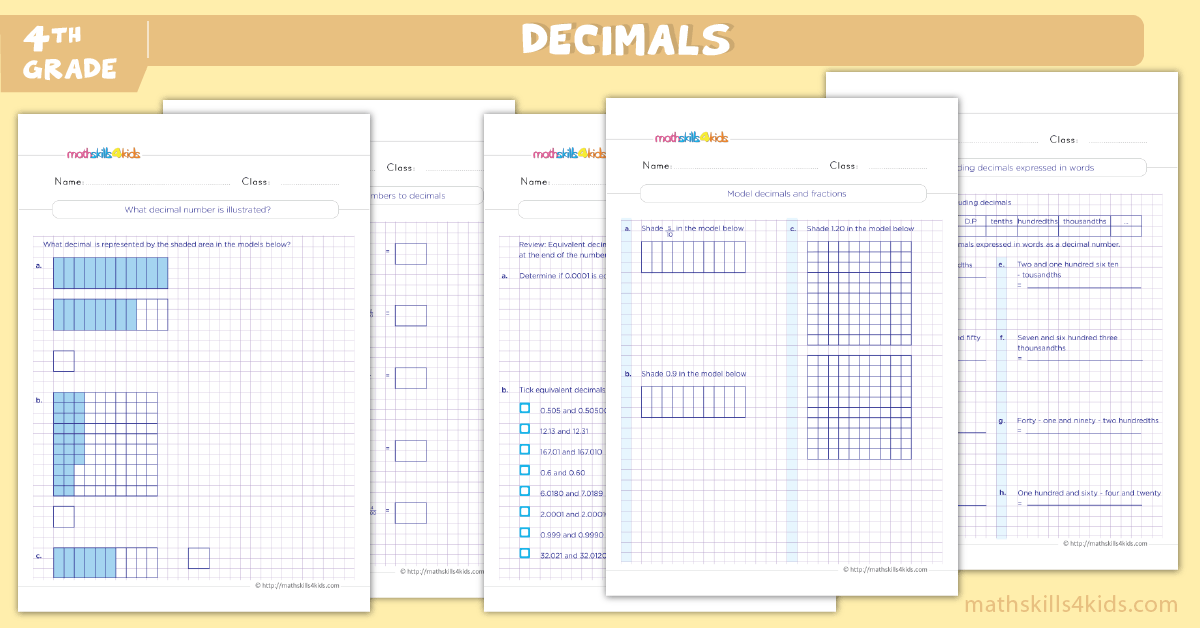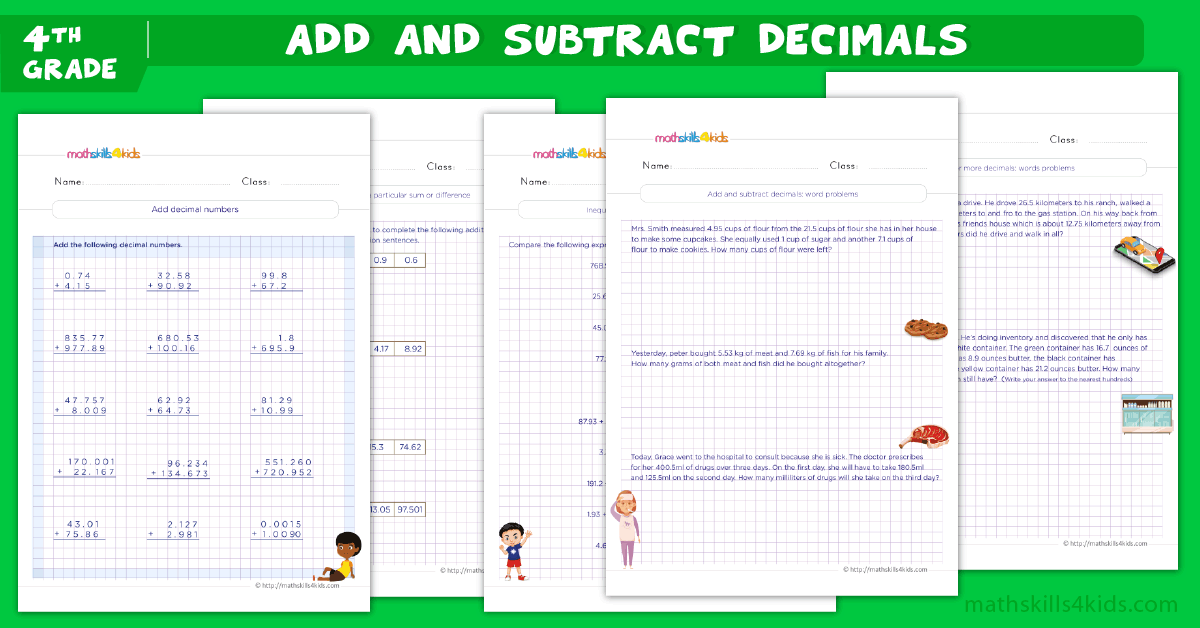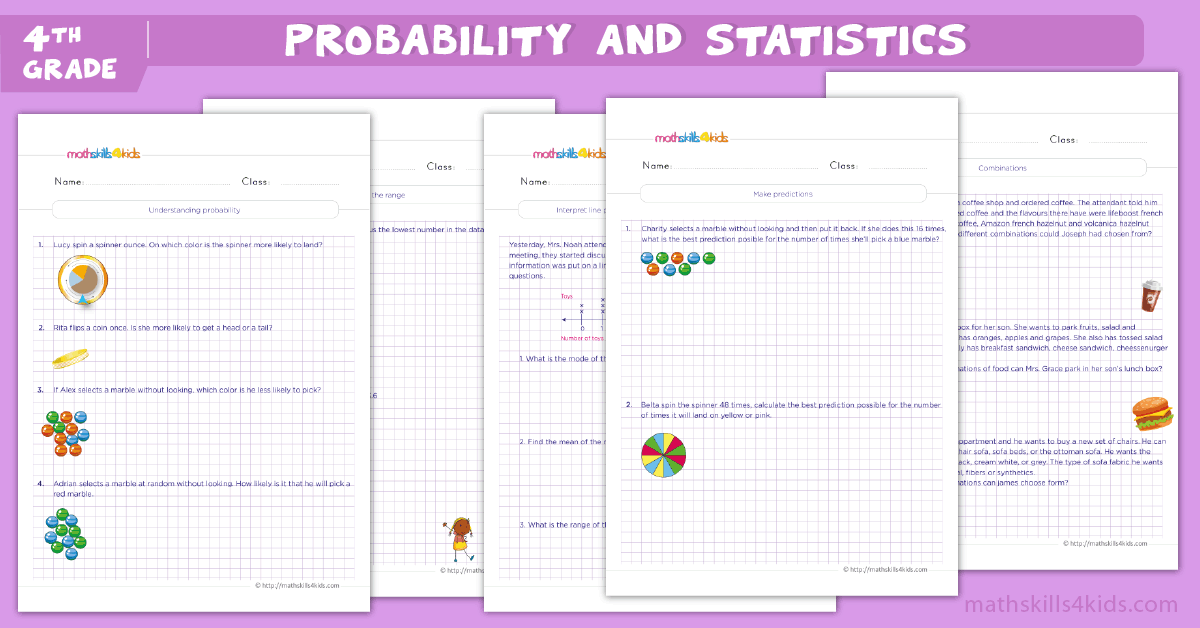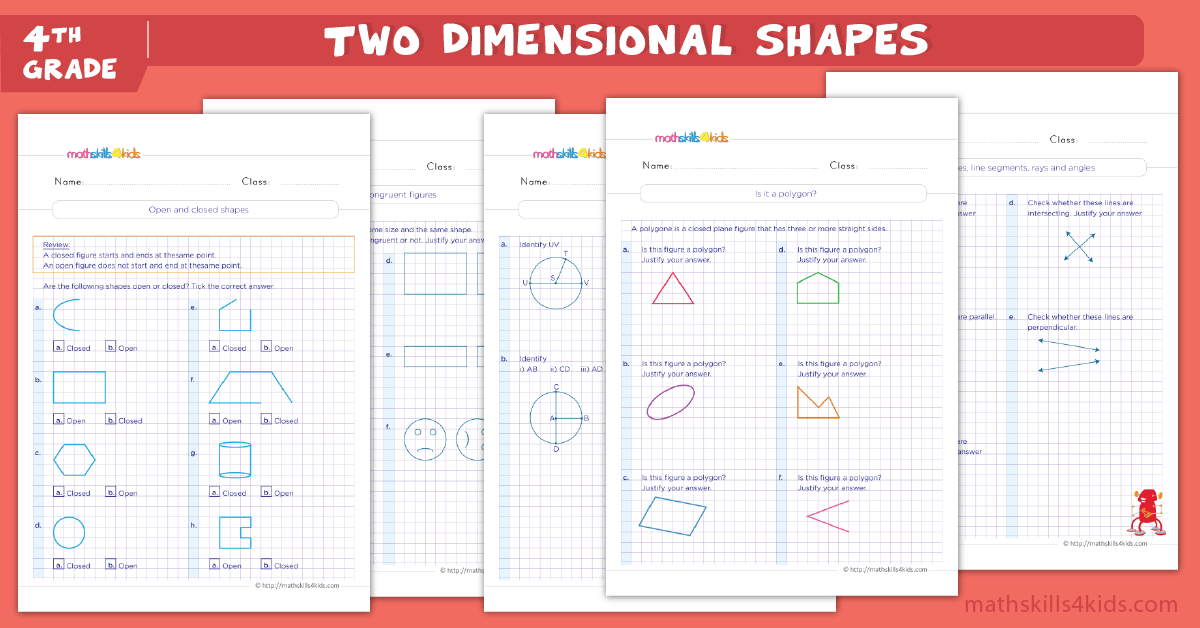4th Grade math worksheets with answers - Free printable resources
Are you looking for some fun and effective ways to help your 4th grader practice and master math skills? Do you want to provide your child with free printable resources that include answers and explanations? If so, you've come to the right place!
-
In this article, we'll share with you a collection of 4th-grade math worksheets with answers that cover all the topics and standards for this grade level. You'll find worksheets for number sense, operations, algebra, geometry, measurement, data, and more.
Plus, we'll give you some tips on how to choose the right worksheets for your child's needs and interests, how to use them effectively to boost their confidence and motivation, and how to make math fun and engaging with worksheets.
And as a bonus, we'll also tell you where to find more of these amazing free printable resources online!
So, are you ready to explore the world of 4th-grade math worksheets with answers? Let's get started!
Why 4th Grade math worksheets are a great way to practice and learn
Math is a crucial subject that requires constant practice and reinforcement. By the time your child reaches 4th grade, they are expected to master a variety of math concepts and skills, such as number sense, operations, fractions, decimals, geometry, measurement, data analysis, and more. These skills are essential for building a strong foundation for higher-level math and developing critical thinking and problem-solving abilities.
One of the best ways to help your child practice and master math skills is by using worksheets. Let’s now see why these 4th Grade math worksheets are a great way for students to practice and learn.
This is because they:
- Provide structured and guided practice with clear instructions and examples
- Allow your child to work at their own pace and level of difficulty
- Offer immediate feedback and self-checking with answers provided
- Reinforce key concepts and skills through repetition and review
- Challenge your child to apply their knowledge and skills to different types of problems
- Motivate your child to improve their accuracy and speed
- Make math fun and interesting with colorful graphics and engaging themes
-
-
Number sense
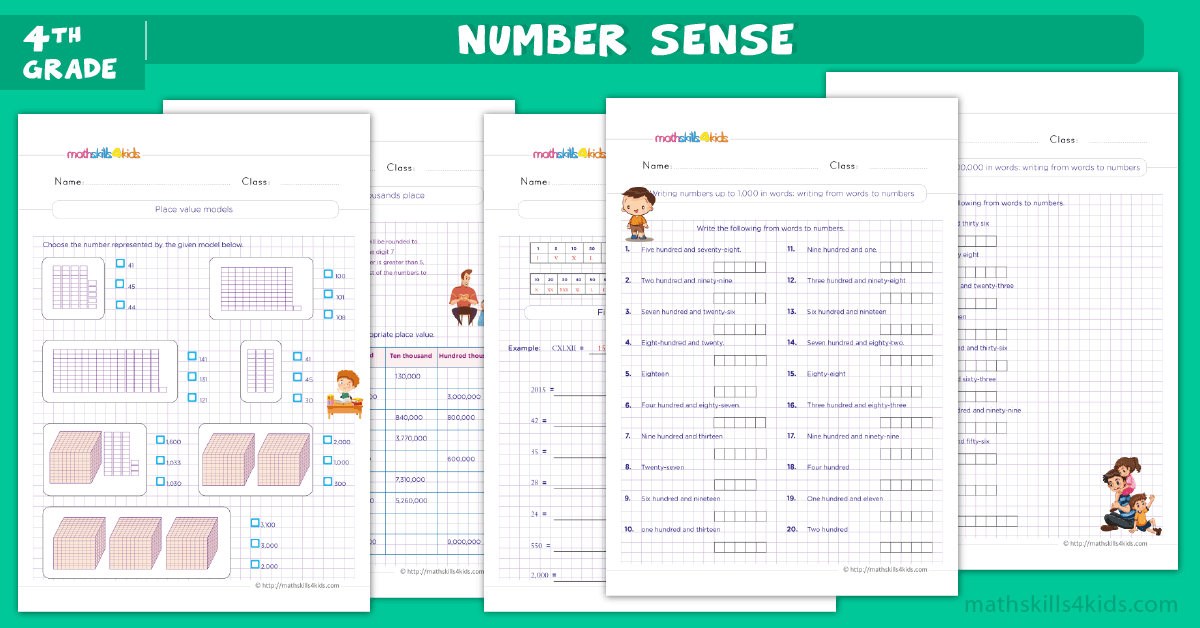
-
Addition
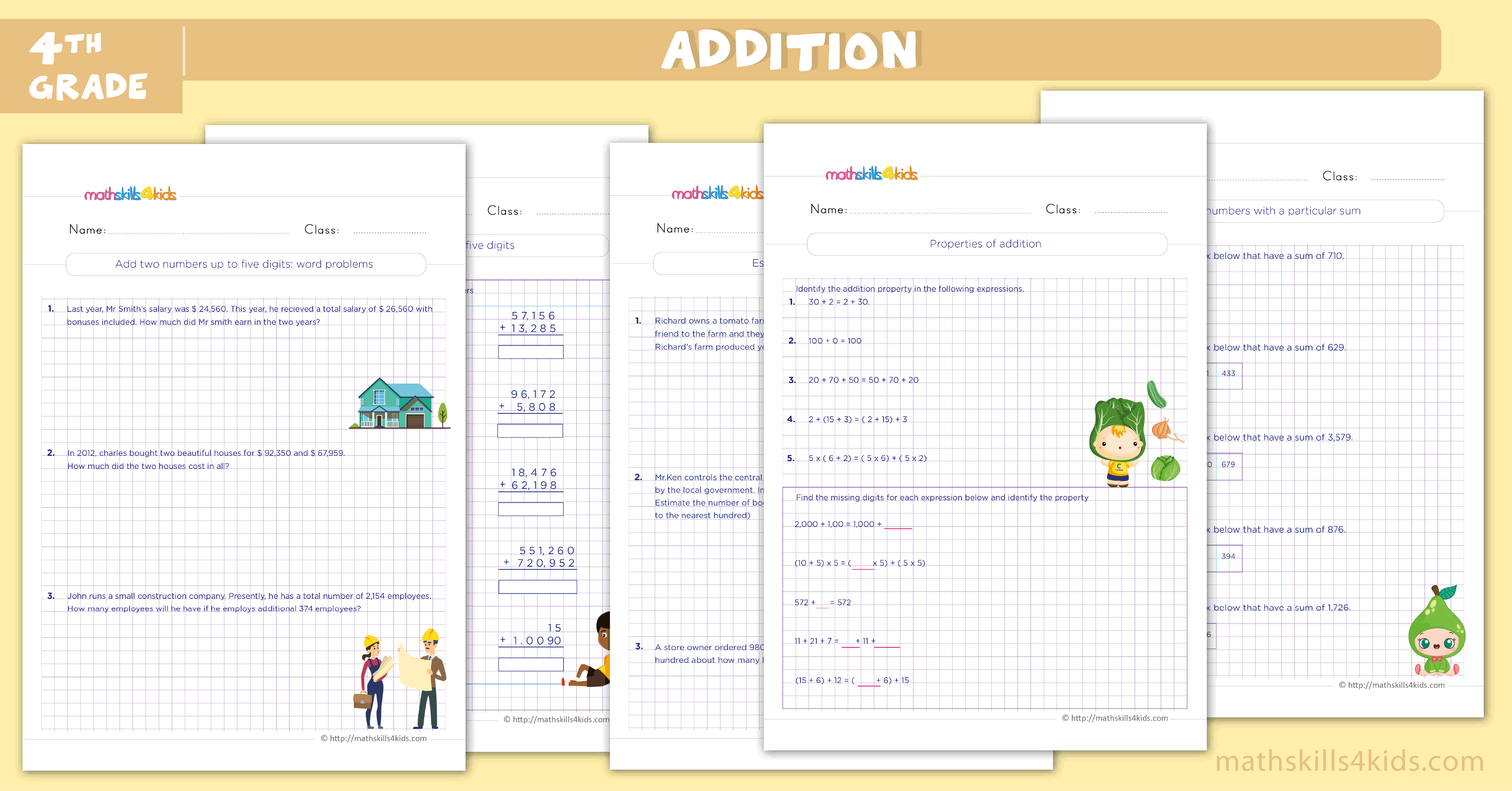
-
Subtraction
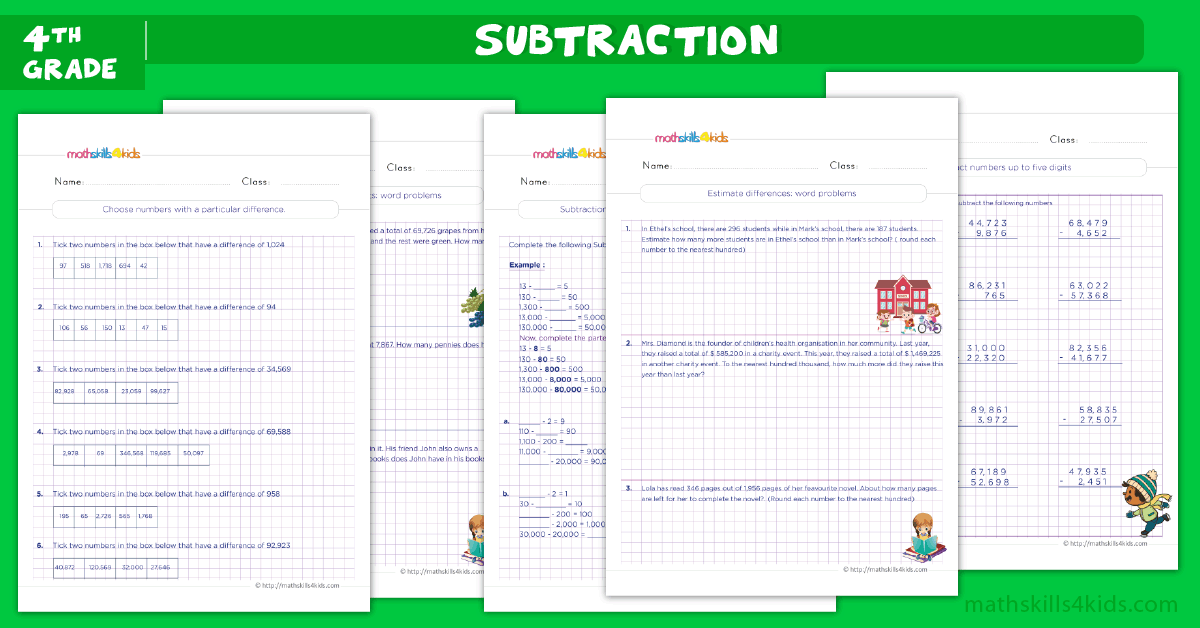
-
Numbers Sense, Addition and Subtraction Worksheets Samples
-
Conversion of numbers using Roman numerals
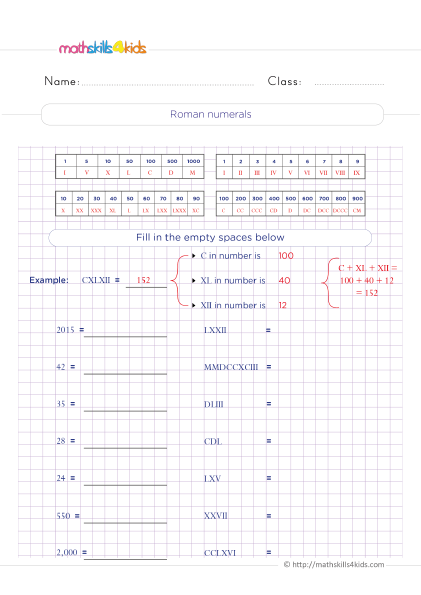 Print it...
Print it...
-
Prime and composite numbers from 1 to 100?
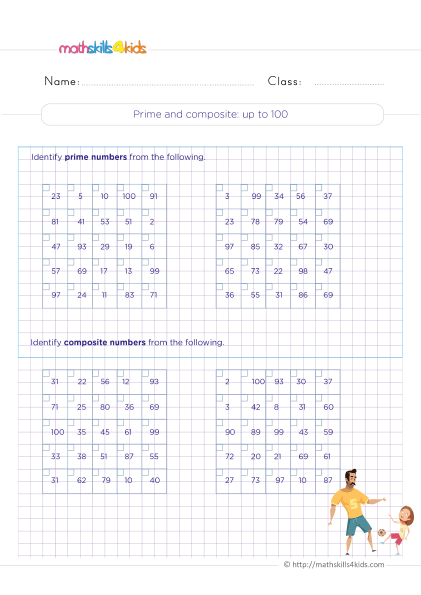 Print it...
Print it...
-
Problem using estimating and rounding
 Print it...
Print it...
-
Subtraction of numbers up to 5-digit word problems
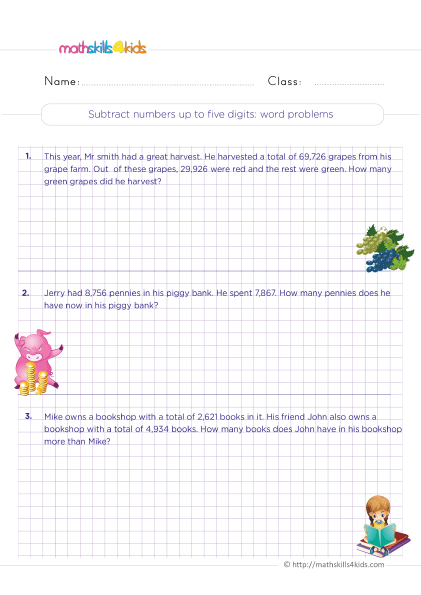 Print it...
Print it...
-
Multiplication
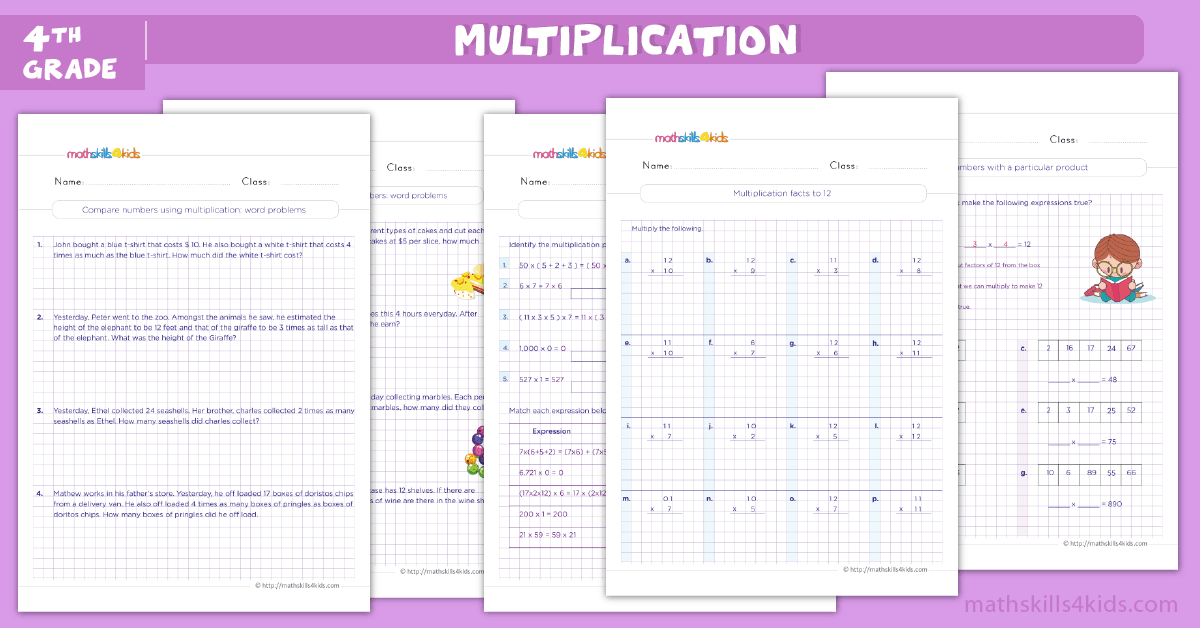
-
Division
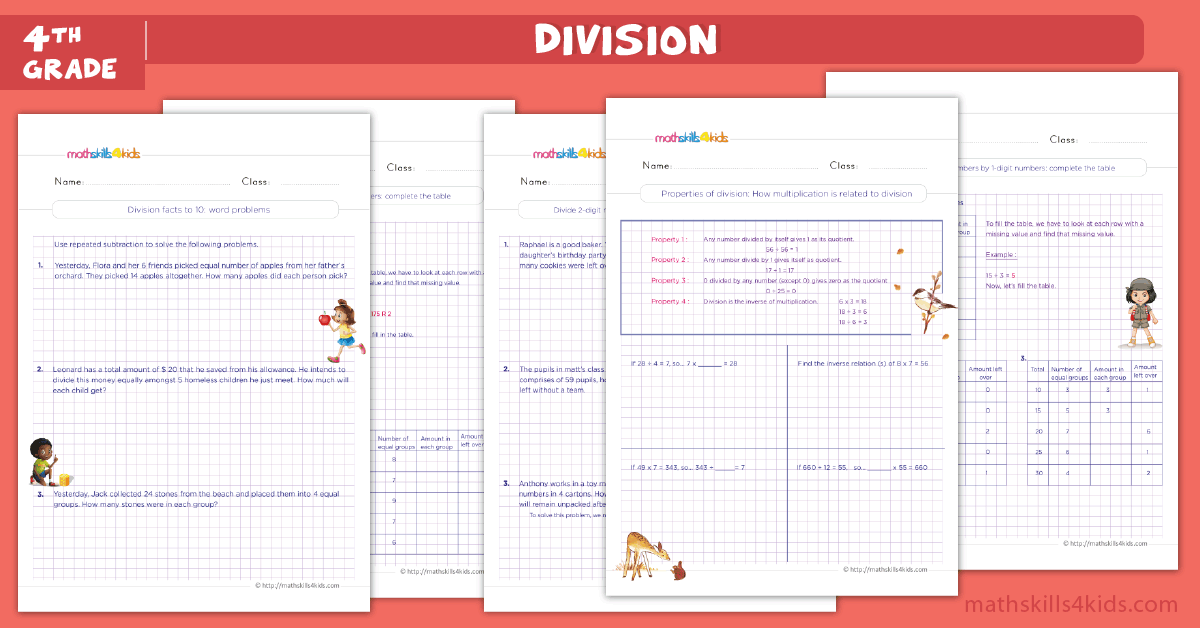
-
Mixed operations
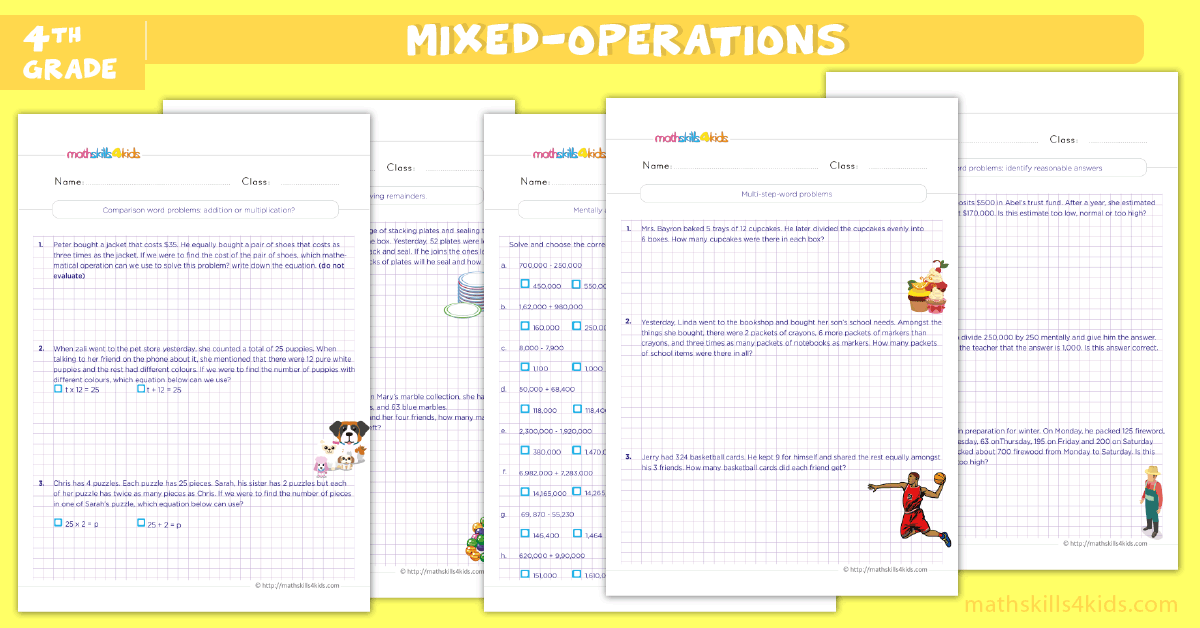
-
Multiplication, Division, and Mixed Operations Worksheets Samples
-
Multiply 2-digit by a 2-digit number word problems
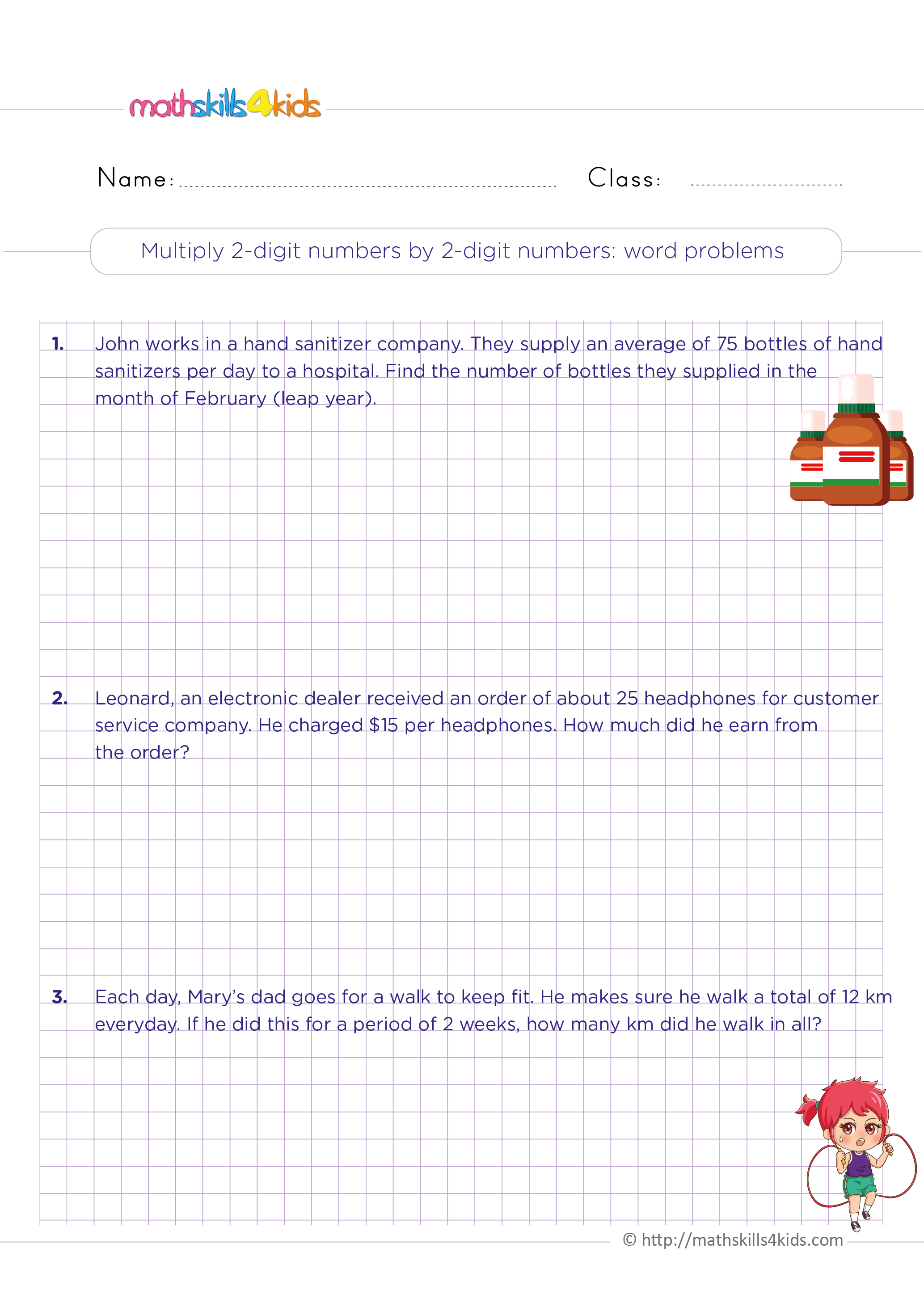 Print it...
Print it...
-
Multiplying numbers ending with zeros word problems
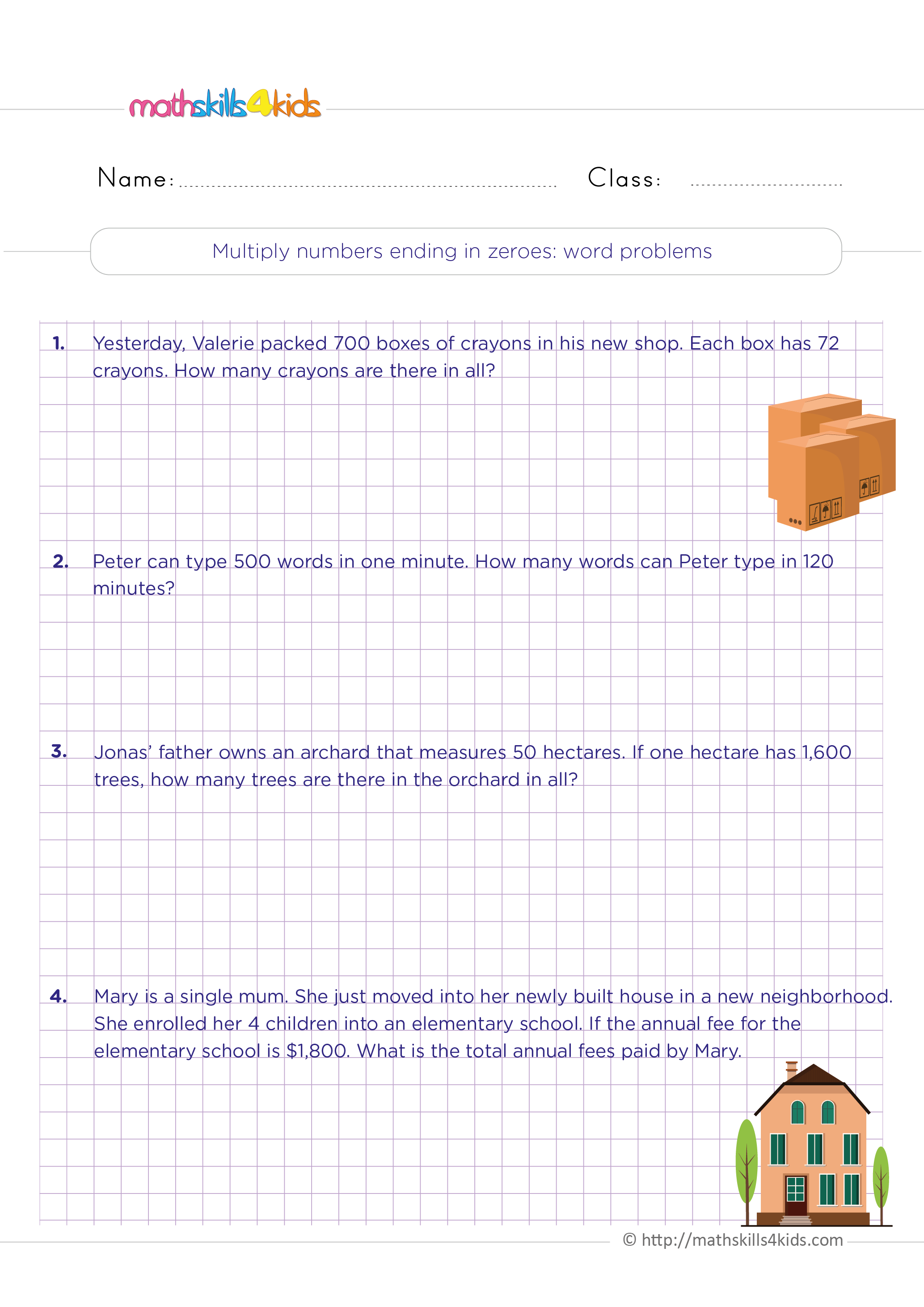 Print it...
Print it...
-
Relating multiplication facts to division facts
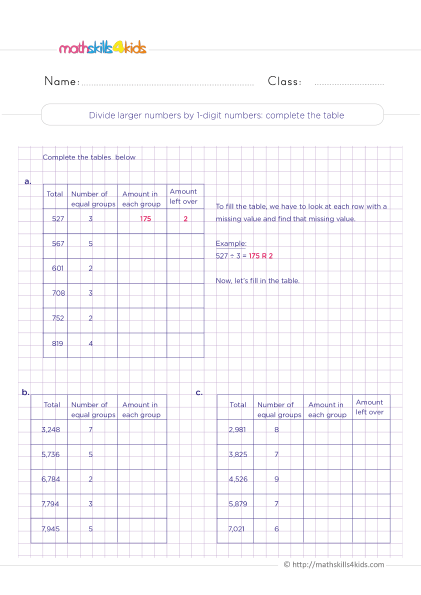 Print it...
Print it...
-
Understanding how to solve multi-step word problems
 Print it...
Print it...
-
-
Buying is supporting us!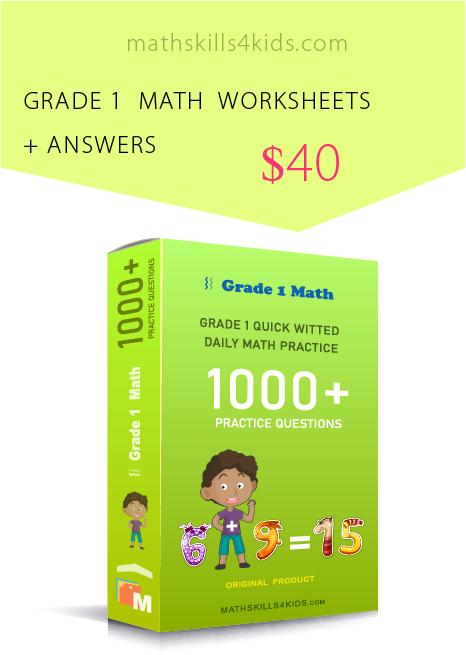
Buy Now...
-
Variable expressions
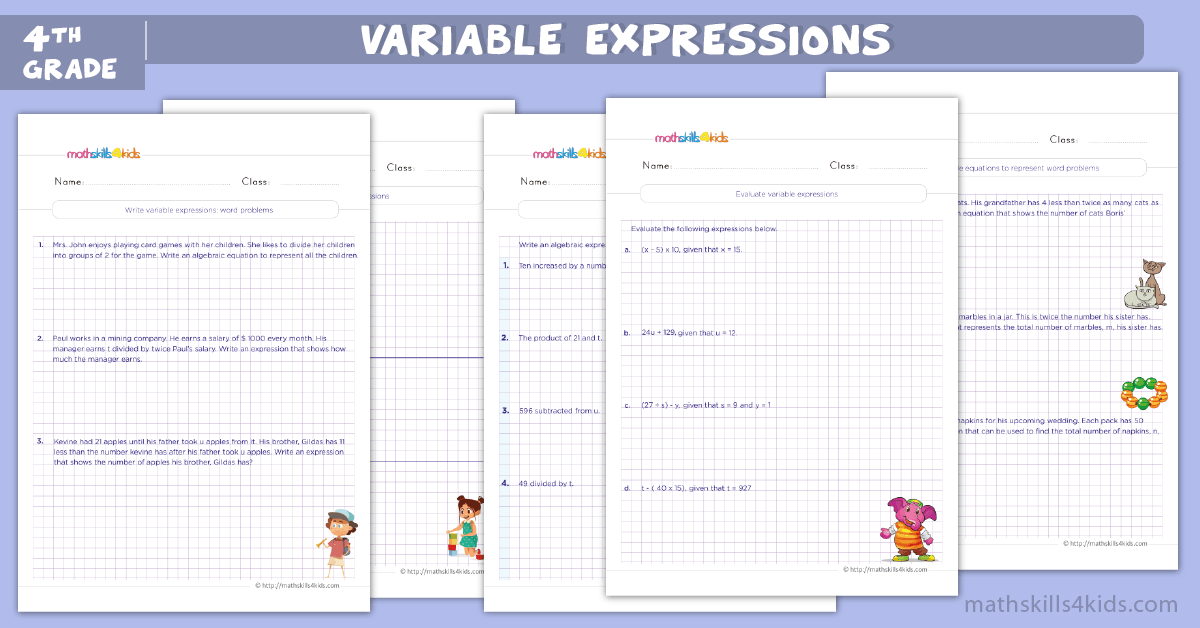
-
Functions
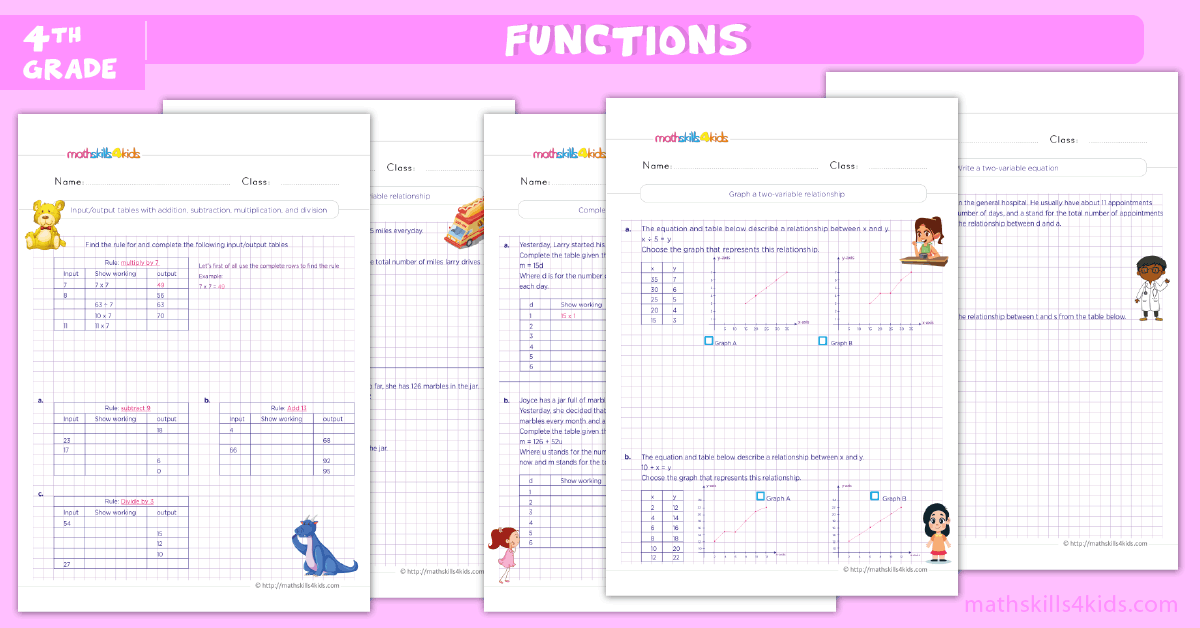
-
Coordinate plane
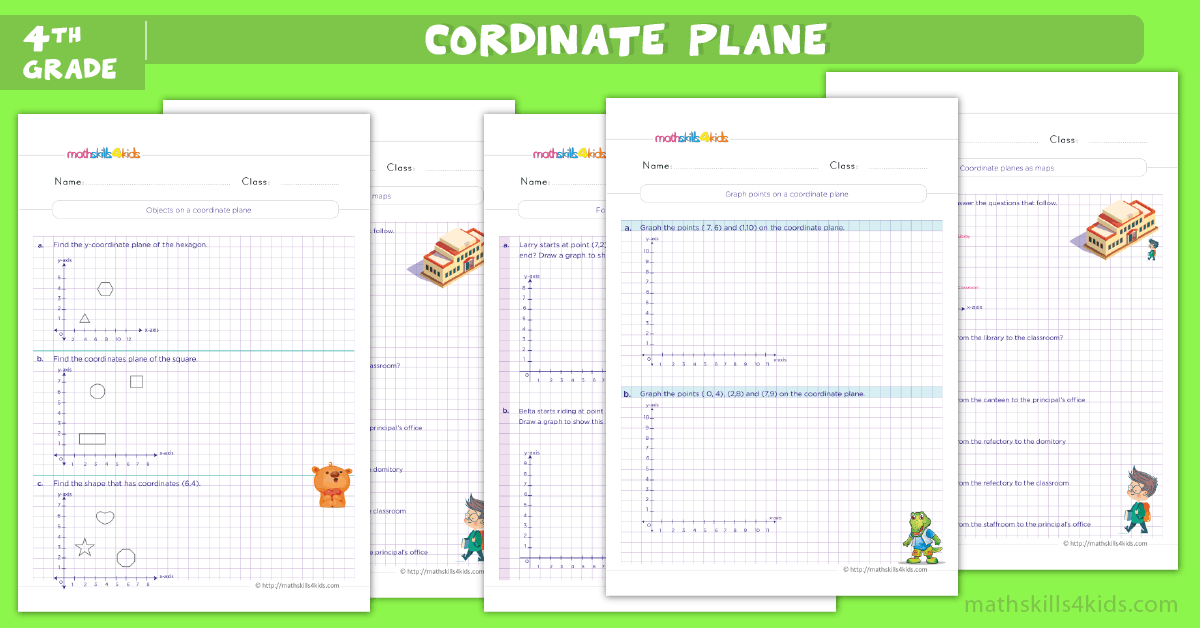
-
Data and graphs
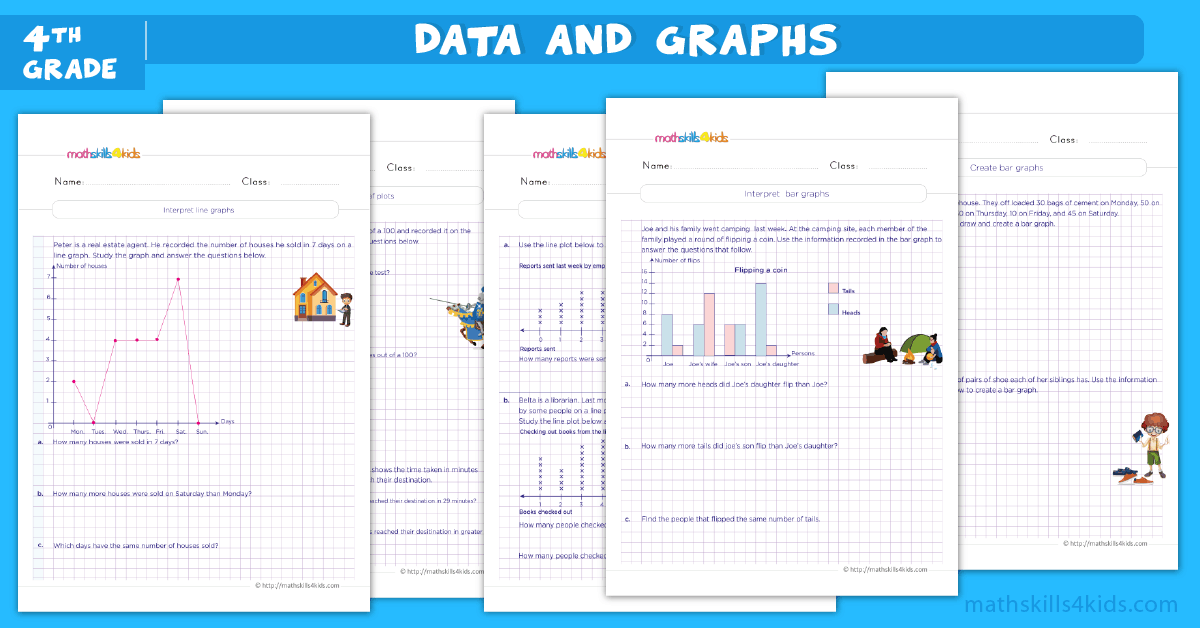
-
Variable Experessions, Functions, Cordinate Plane, and Data Graphing Worksheets Samples
-
Writing variable expression word problems
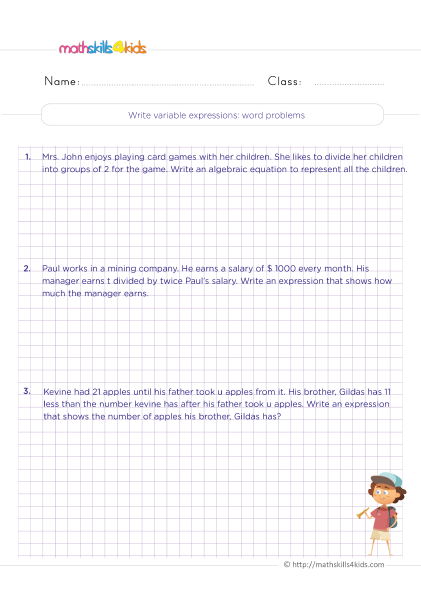 Print it...
Print it...
-
How do you write a two-variable equation?
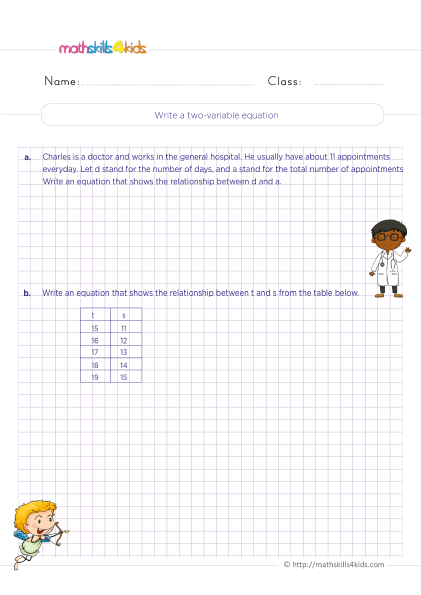 Print it...
Print it...
-
Create and interpret graphs of two-variable relationships
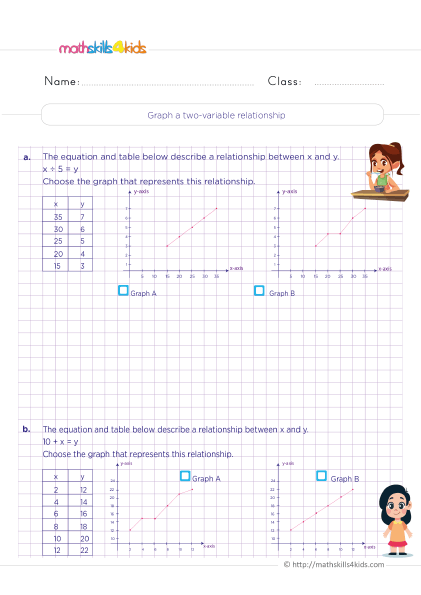 Print it...
Print it...
-
How to follow directions on a coordinate plane
 Print it...
Print it...
-
Create and interpret line plots with fractions
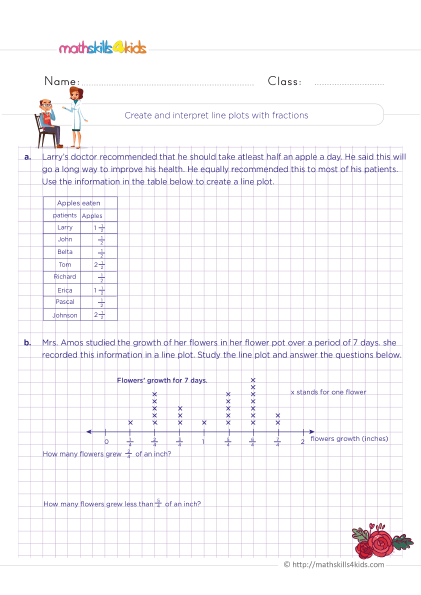 Print it...
Print it...
-
-
Logical reasoning

-
Patterns and sequences
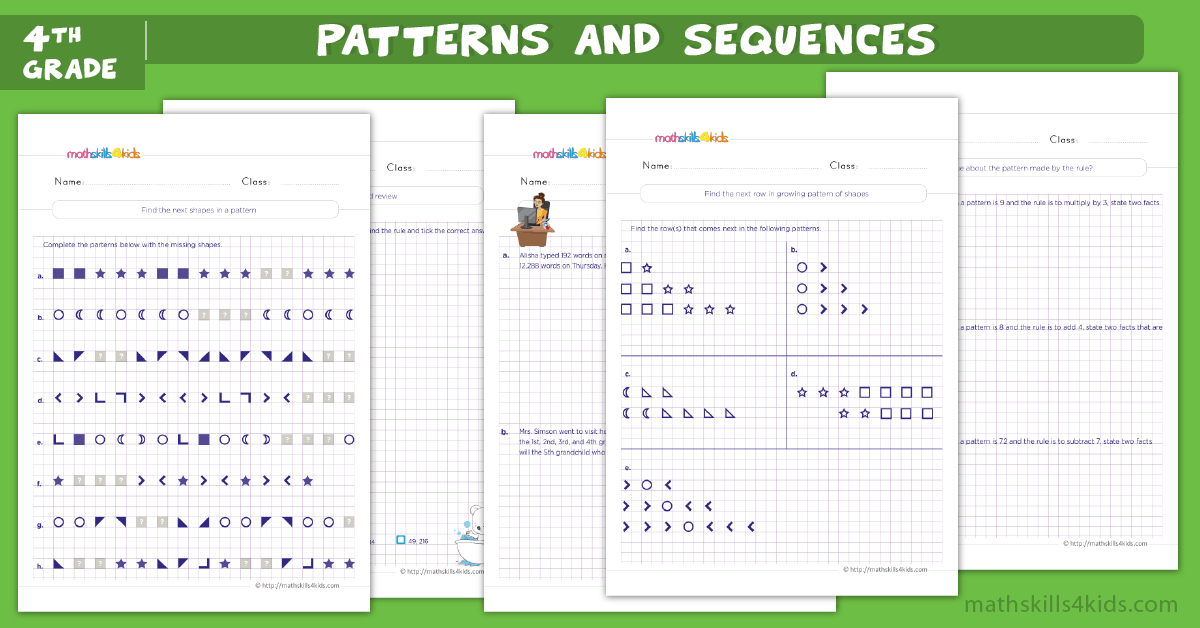
-
Money
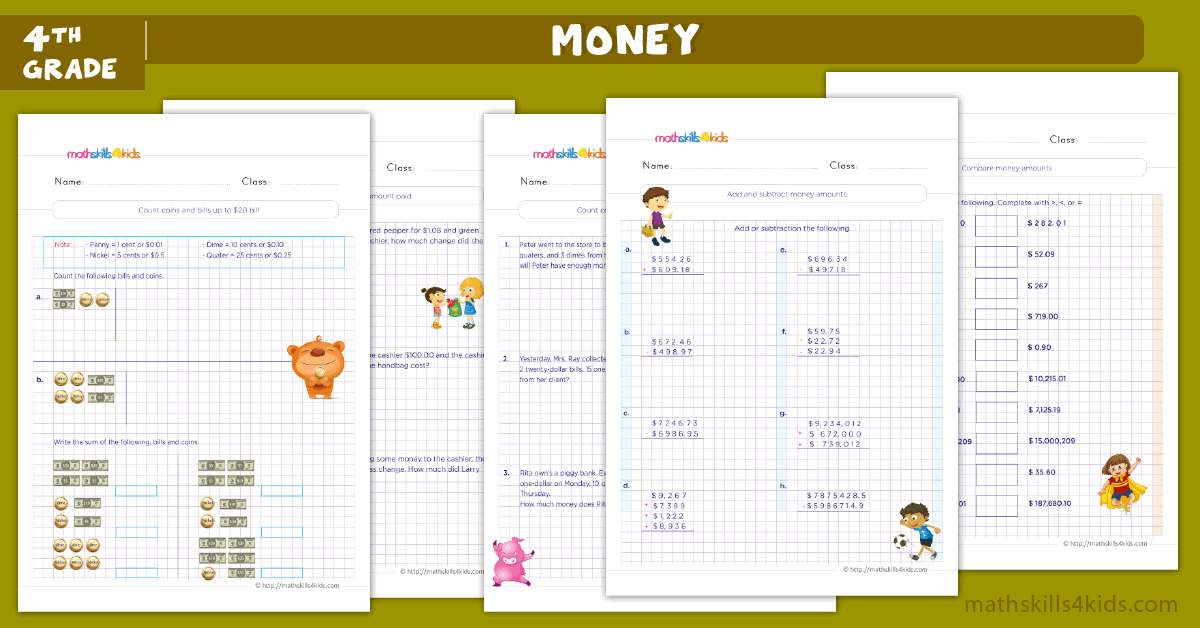
-
Logical Reasoning, Patterns and Sequences, and Money Math Worksheets Samples
-
Creating order comparing 3 elements
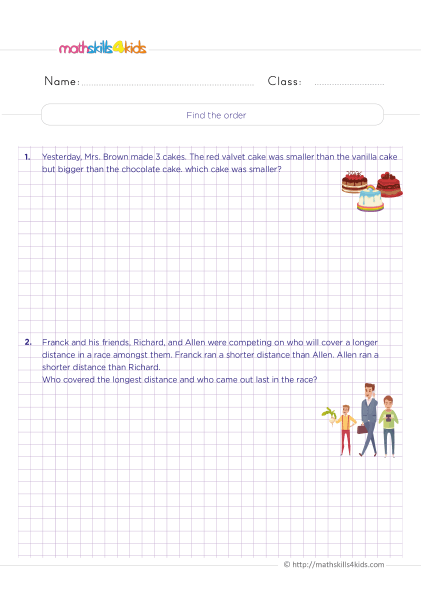 Print it...
Print it...
-
Interpret and find the next shapes in a pattern
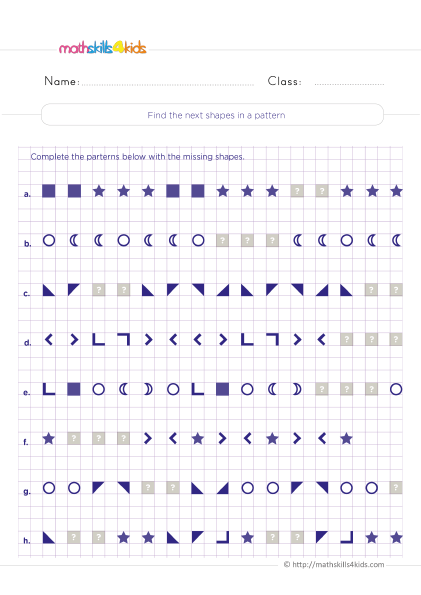 Print it...
Print it...
-
Finding out what is true about a given pattern
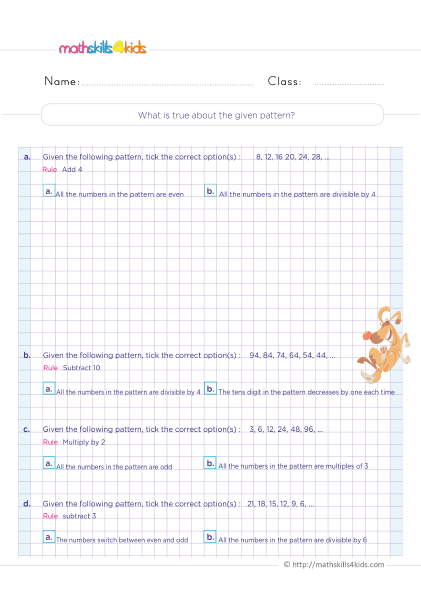 Print it...
Print it...
-
Counting money word problems
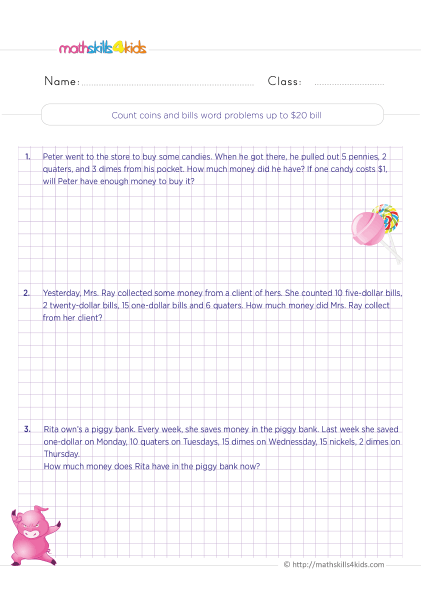 Print it...
Print it...
-
Units of measurement
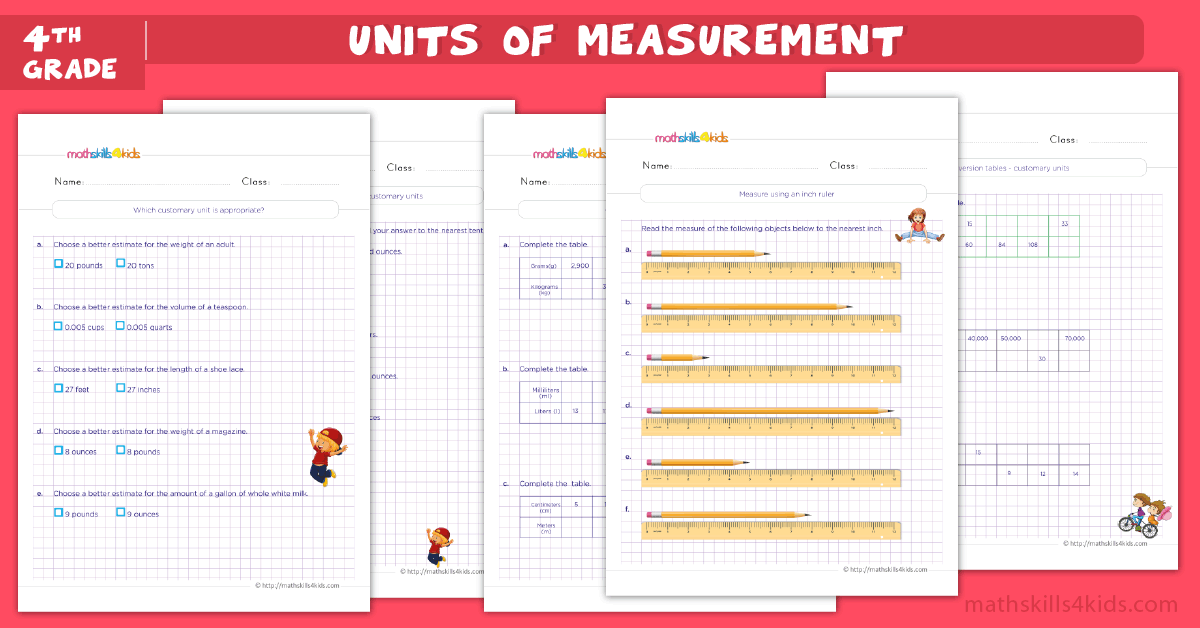
-
Time
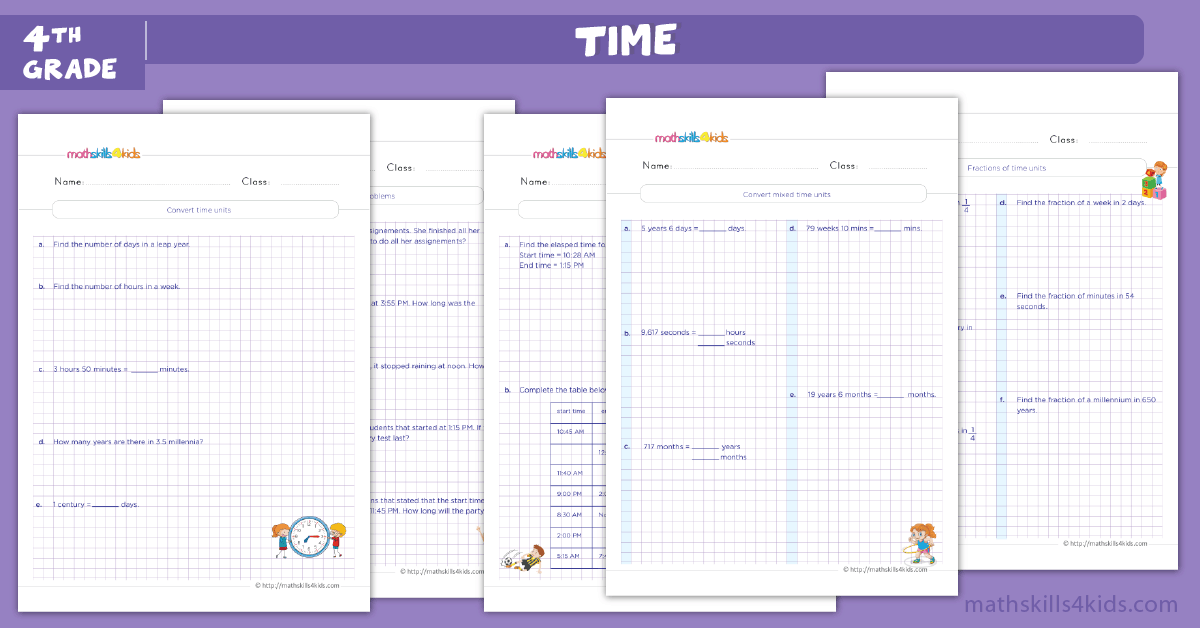
-
Fraction equivalence & ordering
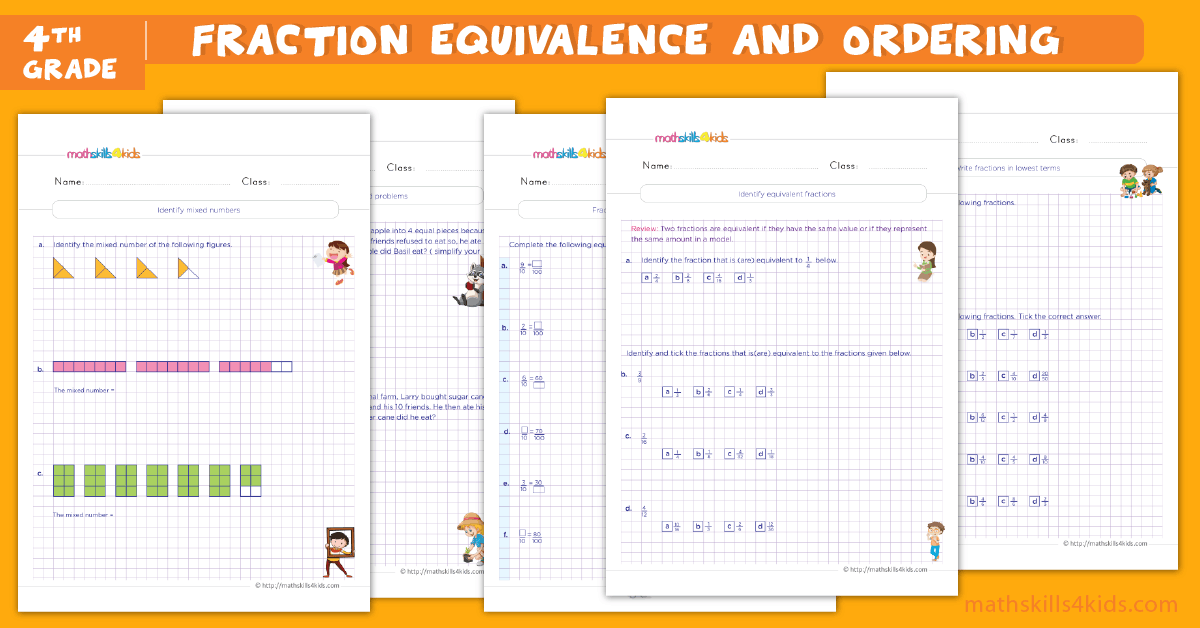
-
Units of Measurement, time, and Fractions Equivalence Worksheets Samples
-
Compare and convert customary units
 Print it...
Print it...
-
Convert between metric and customary units
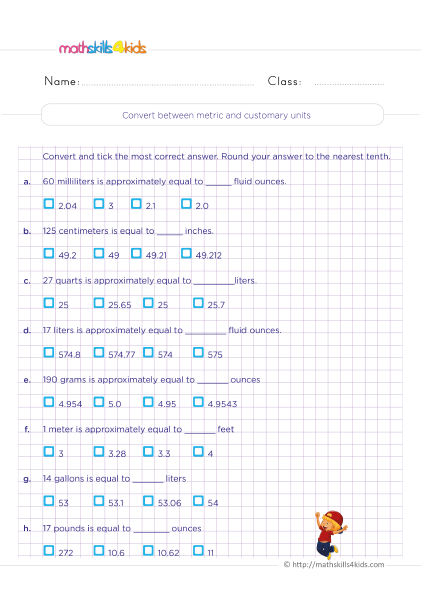 Print it...
Print it...
-
Solving elapsed time word problems
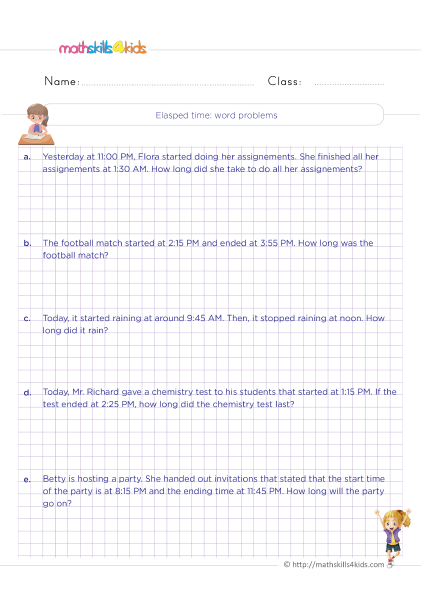 Print it...
Print it...
-
Compare like & unlike fractions
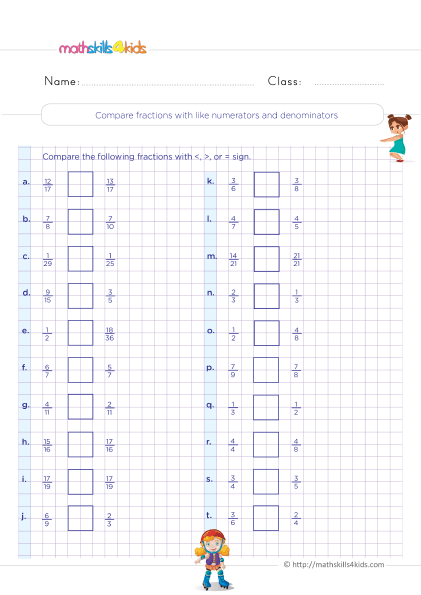 Print it...
Print it...
-
Add & subtract like fractions

-
Add & subtract unlike fractions
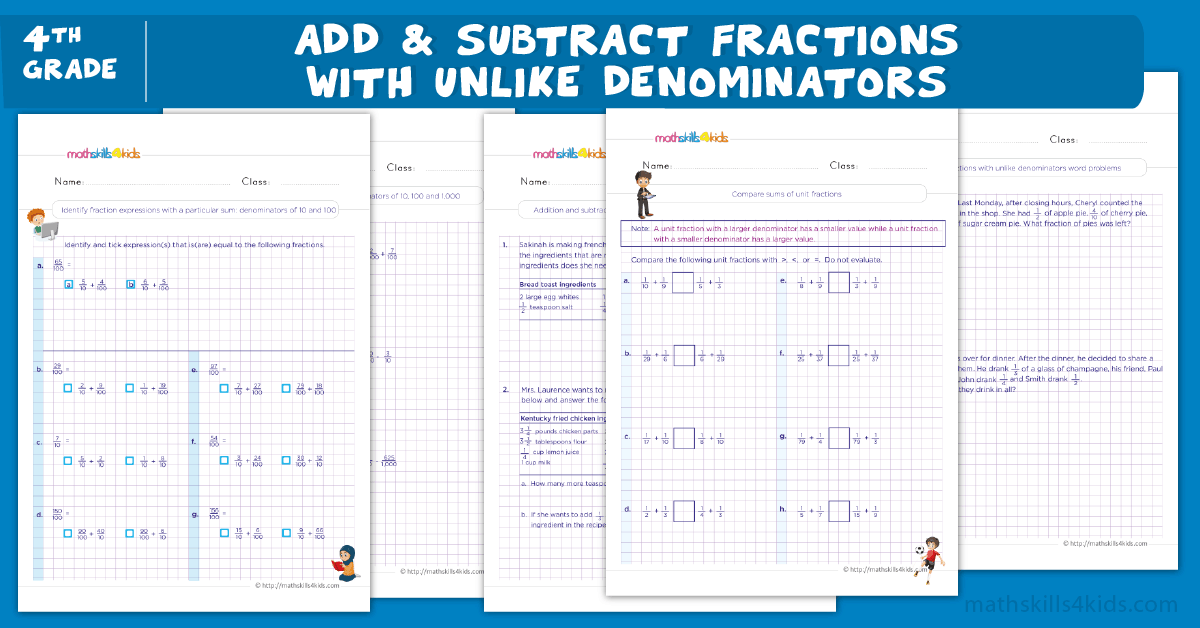
-
Multiply fractions
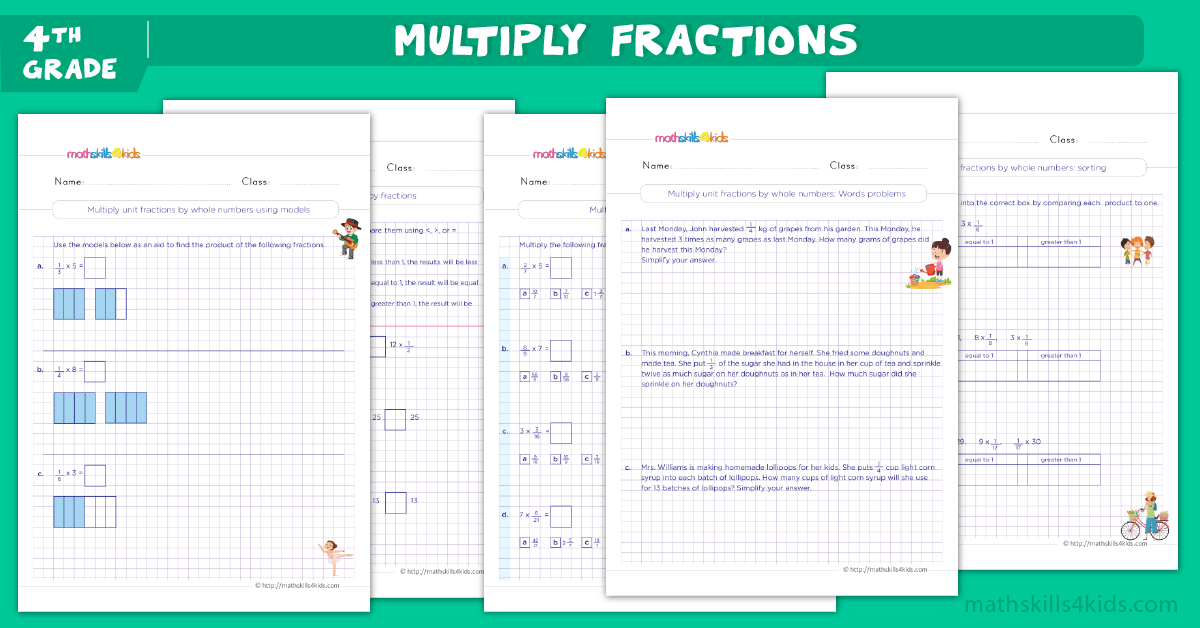
-
Adding, Subtracting, and Multiplying Like and Unlike Fractions Worksheets Samples
-
Multiplying fractions
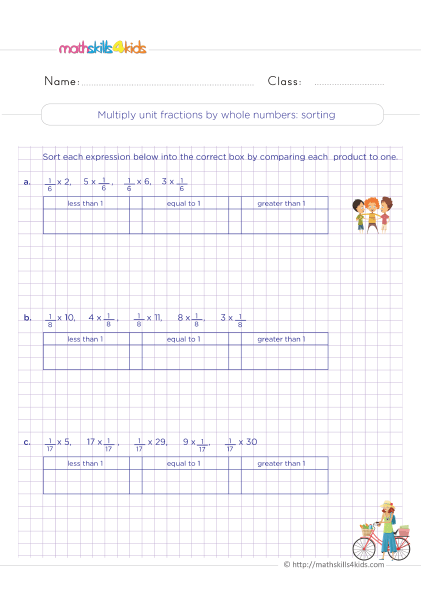 Print it...
Print it...
-
Multiplying fractions by whole numbers
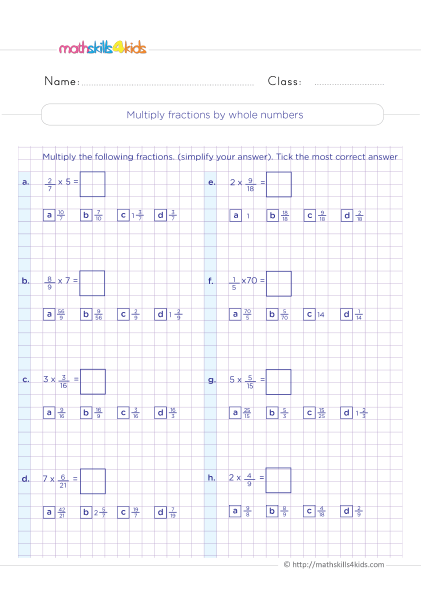 Print it...
Print it...
-
Adding and subtracting like fractions
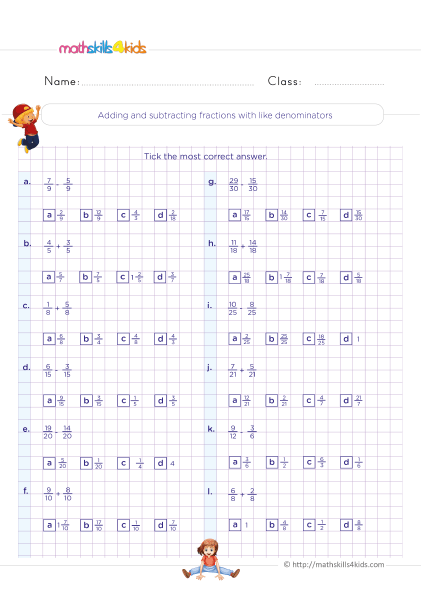 Print it...
Print it...
-
Adding and subtracting unlike fractions in recipes
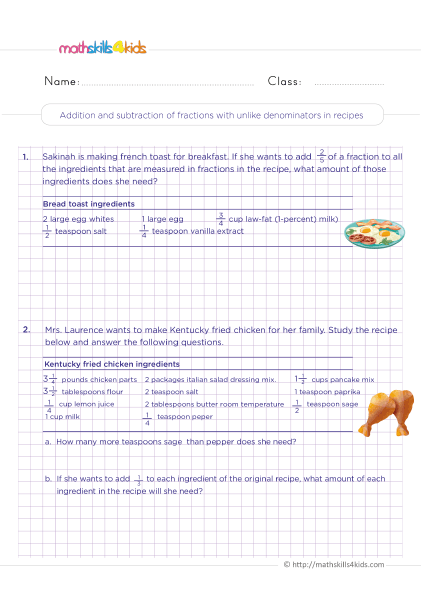 Print it...
Print it...
-
-
-
-
Decimals, Add & Subtract Decimals, Probability & Statistics, and 2D Shapes Worksheets Samples
-
Matching clocks and time in words
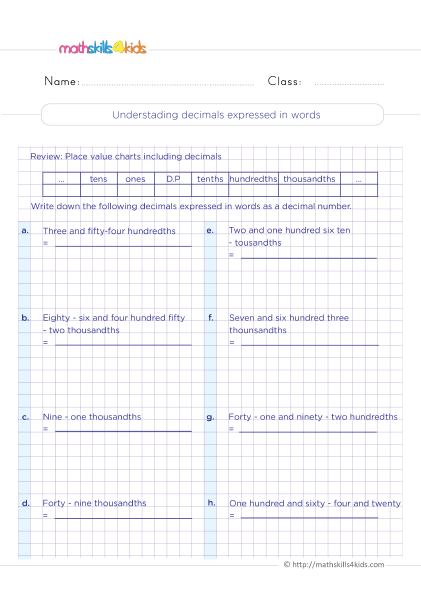 Print it...
Print it...
-
Add & subtract decimals word problems
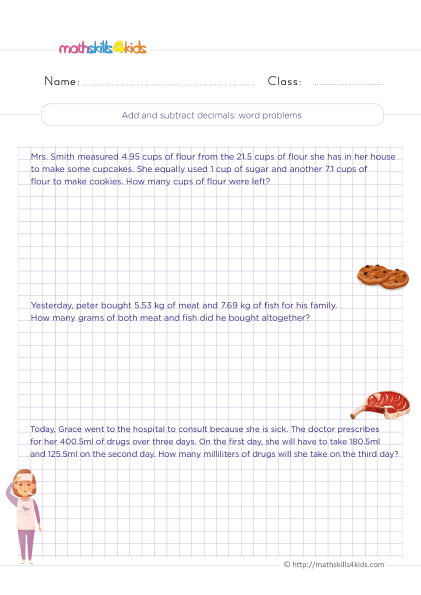 Print it...
Print it...
-
Combinations
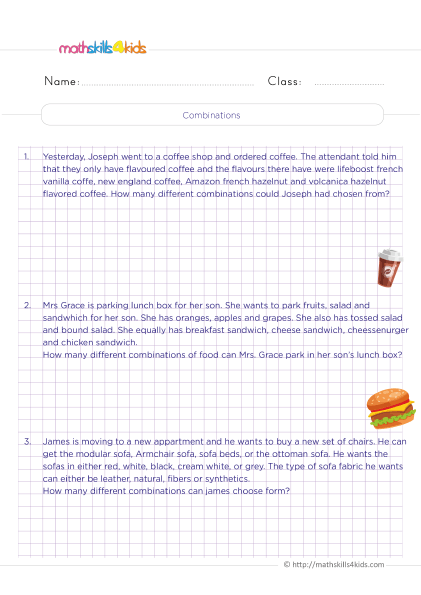 Print it...
Print it...
-
Open and closed shapes
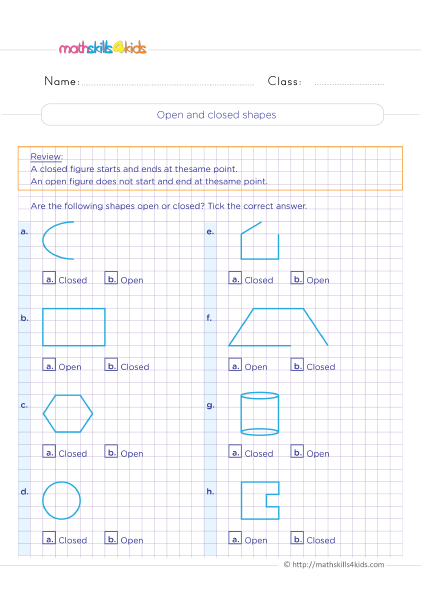 Print it...
Print it...
-
Triangles & quadrilaterals
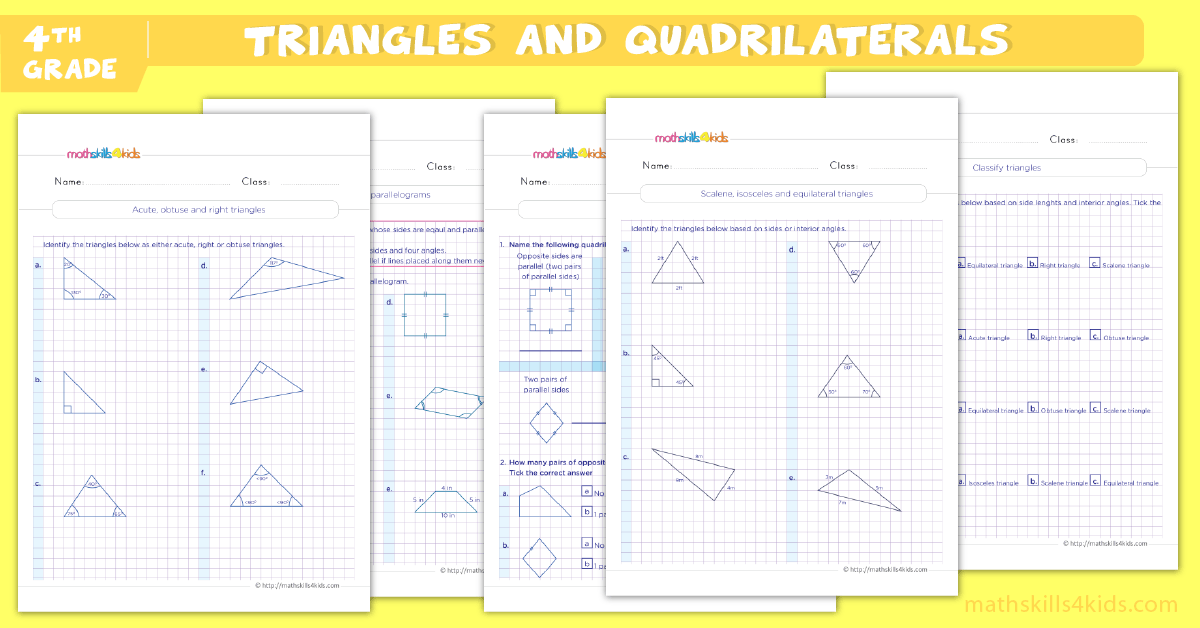
-
Symmetry
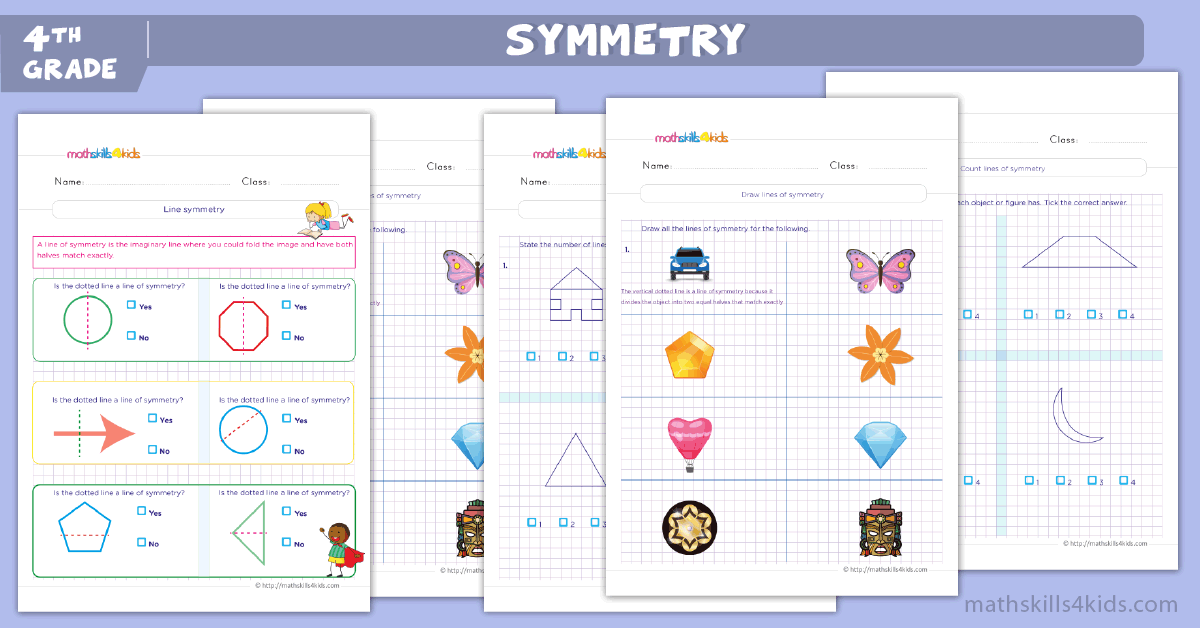
-
Angles
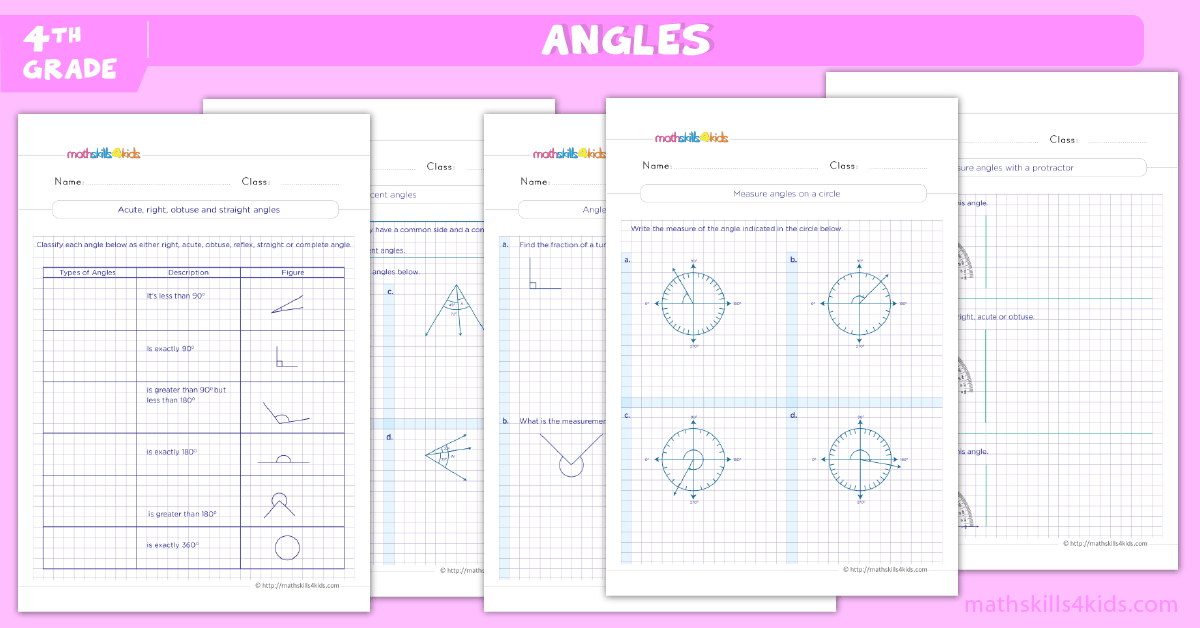
-
Triangles & Quadrilaterals, Symmetry, and Angles Worksheets Samples
-
Parallel in quadrilaterals
 Print it...
Print it...
-
Identifying line of symmetry
 Print it...
Print it...
-
Angles
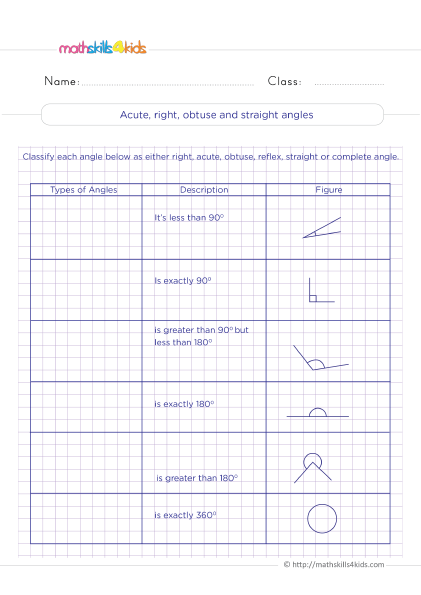 Print it...
Print it...
-
Measuring angles on a circle
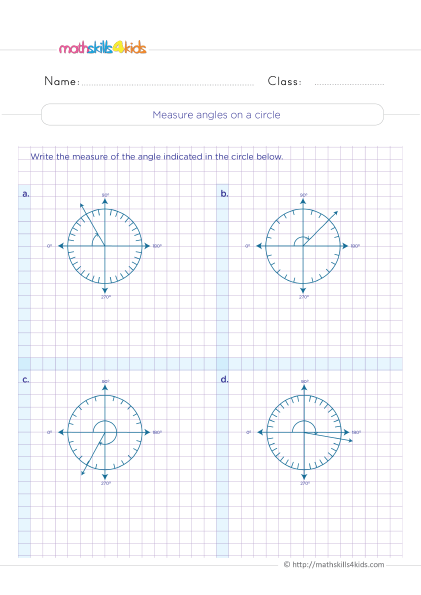 Print it...
Print it...
-
-
Three-dimensional shapes

-
Geometric measurement
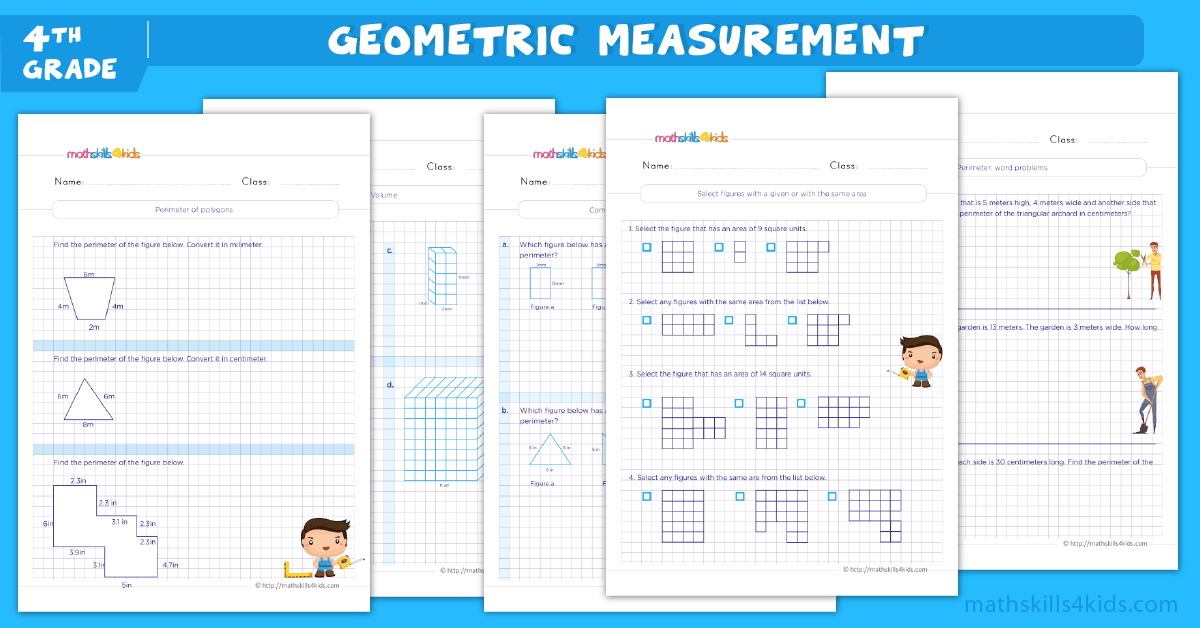
-
3D Shapes, and Geometric measurement Worksheets Samples
-
Identifying 3D shapes
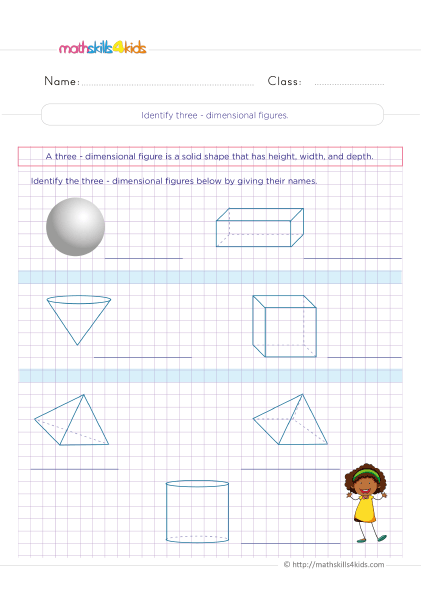 Print it...
Print it...
-
Properties of 3D shapes
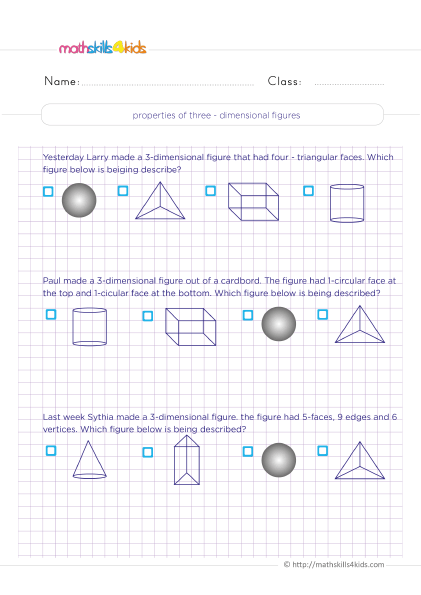 Print it...
Print it...
-
Select figures with a given area
 Print it...
Print it...
-
Create rectangles
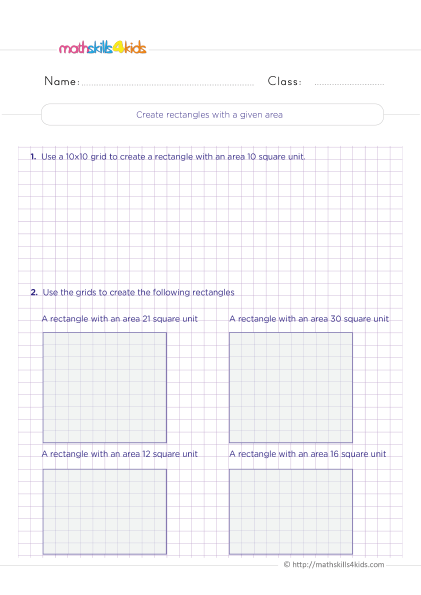 Print it...
Print it...
-
Find the missing sides
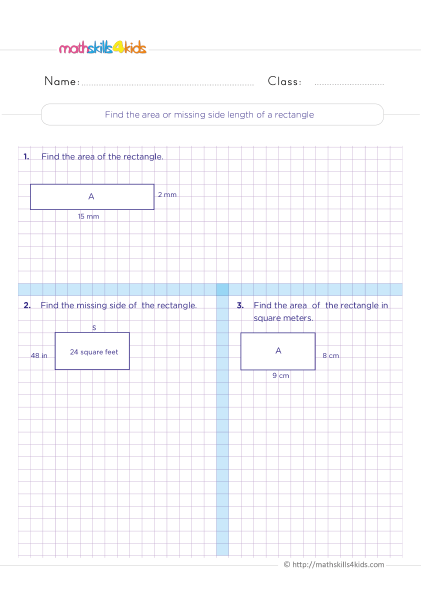 Print it...
Print it...
LEARN MORE ABOUT FOURTH GRADE MATH
-
-
Enjoy MathSkills4Kids fun and engaging 4th Grade math worksheets with answers
Math is a crucial subject that helps children develop logical thinking, problem-solving, and reasoning skills. It also prepares them for future academic and career success. However, many children struggle with math or find it boring and frustrating. That's why providing them with plenty of practice and support is important to help them overcome their challenges and enjoy learning math.
One of the best ways to do that is by using worksheets. Worksheets are great for reinforcing and reviewing math concepts, skills, and strategies. They also help children practice math in different contexts and formats, such as word problems, puzzles, games, etc. Worksheets can also help children track their progress and identify their strengths and weaknesses.
But not all worksheets are created equal. Some worksheets are too easy or too hard for your child's skill level. Some worksheets are too dull or too confusing for your child's interests. Some worksheets are too long or too short for your child's attention span. And some worksheets don't provide enough feedback or guidance for your child's learning.
That's why we've created this collection of MathSkills4Kids fun and engaging 4th-grade math worksheets with answers specially designed to meet your child's needs and preferences. These worksheets are:
- Aligned with the Common Core State Standards (CCSS) for 4th-grade math
- Organized by topics and subtopics for easy navigation
- Varied in difficulty levels and formats to suit different abilities and learning styles
- Fun and engaging to spark your child's curiosity and interest
- Free and printable to save you time and money
- Complete with answers and explanations to help your child check their work and learn from their mistakes
Number sense worksheets
Number sense is the ability to understand and work with numbers in various ways. It includes recognizing numbers, comparing numbers, ordering numbers, rounding numbers, estimating numbers, etc. Number sense is essential for developing fluency and accuracy in math operations.
These number sense worksheets will help your 4th grader practice and improve their number sense skills by:
- Reading and writing numbers up to millions in standard form, word form, expanded form, etc.
- Comparing and ordering numbers up to millions using symbols (<, >, =) or words (less than, greater than, equal to)
- Rounding numbers up to millions to the nearest ten, hundred, thousand, etc.
- Estimating sums, differences, products, or quotients by rounding numbers or using compatible numbers
- Identifying place values of digits in numbers up to millions
- Using place value patterns to multiply or divide numbers by powers of ten
Addition worksheets
Addition is one of the four basic math operations that involves combining two or more numbers to get a larger number. It is also the inverse operation of subtraction. Addition is used to model situations such as joining groups, adding lengths or weights, finding totals or changes, etc.
These addition worksheets will help your 4th grader practice and improve their addition skills by:
- Adding two or more whole numbers up to millions with or without regrouping
- Adding two or more decimals up to hundredths with or without regrouping
- Adding fractions with like or unlike denominators
- Adding mixed numbers with like or unlike denominators
- Solving word problems involving addition of whole numbers, decimals, fractions, or mixed numbers
Subtraction worksheets
These worksheets will help your child practice subtraction with whole numbers and decimals. They include problems with regrouping, borrowing, and word problems. Your child will learn how to subtract numbers with up to four digits and how to check their answers using addition. They will also learn how to subtract decimals with different place values and how to round their answers to the nearest tenth or hundredth.
Multiplication worksheets
These worksheets will help your child master multiplication with single-digit and multi-digit factors. They include problems with arrays, area models, partial products, and standard algorithms. Your child will learn how to multiply numbers with up to four digits and how to use the distributive property and the commutative property of multiplication. They will also learn how to multiply decimals by whole numbers and by other decimals and how to estimate their answers using rounding.
Division worksheets
These worksheets will help your child practice division with whole numbers and decimals. They include problems with equal groups, repeated subtraction, long division, and word problems. Your child will learn how to divide numbers with up to four digits by one-digit or two-digit divisors and how to interpret remainders. They will also learn how to divide decimals by whole numbers and other decimals and use inverse operations to check their answers.
Mixed operations worksheets
These worksheets will help your child review and apply all four operations: addition, subtraction, multiplication, and division. They include problems with parentheses, order of operations, multi-step word problems, and mixed numbers. Your child will learn how to solve complex problems involving multiple-step operations and how to use the properties of operations to simplify expressions. They will also learn to add, subtract, multiply, and divide fractions and decimals.
Variable expressions worksheets
These worksheets will help your child practice writing and evaluating variable expressions. They include problems with numerical expressions, algebraic expressions, equivalent expressions, and word problems. Your child will learn how to write expressions using variables, constants, and coefficients and how to use the order of operations to evaluate them. They will also learn how to identify equivalent expressions using the properties of operations and how to write expressions that represent real-world situations.
Functions worksheets
These worksheets will help your child practice identifying and graphing functions. They include problems with input-output tables, function rules, function notation, and coordinate plane graphs. Your child will learn how to determine whether a relation is a function and how to write a function rule given a table or graph. They will also learn how to use function notation to evaluate functions for given values of the input variable and how to graph functions using ordered pairs.
Coordinate plane worksheets
These worksheets will help your child practice plotting points and shapes on the coordinate plane. They include problems with ordered pairs, quadrants, axes, origin, distance formula, midpoint formula, and transformations. Your child will learn how to locate points on the coordinate plane using ordered pairs of numbers and how to identify the quadrant or axis where a point lies. They will also learn how to find the distance and the midpoint between two points using formulas and how to perform translations, rotations, reflections, and dilations on shapes on the coordinate plane.
Data and graphing worksheets
These worksheets will help your child practice collecting, organizing, displaying, and interpreting data using graphs. They include problems with frequency tables, line plots, bar graphs, pictographs, line graphs, and circle graphs. Your child will learn how to create frequency tables from raw data and make line plots using fractions or decimals. They will also learn how to draw bar graphs and pictographs using scales and symbols and how to read and compare data from different types of graphs. They will also learn how to make line and circle graphs using percentages and angles and interpret trends and patterns from graphs.
Logical reasoning worksheets
These worksheets will help your child practice logical reasoning skills using math concepts. They include problems with deductive reasoning, inductive reasoning, conditional statements, converse, inverse, contrapositive, biconditional statements, truth tables, and Venn diagrams. Your child will learn how to use deductive reasoning to draw conclusions from given facts or rules and use inductive reasoning to make generalizations from specific cases or patterns.
They will also learn how to write conditional statements using the “if-then” form and find the converse, inverse, contrapositive, and biconditional statements of a given conditional statement. They will also learn how to use truth tables to determine the truth value of compound statements and how to use Venn diagrams to represent sets and their relationships.
Patterns and sequences worksheets
These worksheets will help your child practice identifying and extending patterns and sequences using math concepts. They include problems with number patterns, geometric patterns, arithmetic sequences, geometric sequences, and Fibonacci sequences. Your child will learn how to find the rule or the formula that generates a pattern or a sequence and how to use it to find the missing or the next terms.
They will also learn how to identify and describe geometric patterns using shapes, colors, or sizes and how to find the common difference or the common ratio of an arithmetic or a geometric sequence. They will also learn how to recognize and extend the Fibonacci sequence using addition.
Money math worksheets
These worksheets will help your child practice money math skills using U.S. currency. They include problems with counting coins and bills, making change, comparing amounts, adding and subtracting money, multiplying and dividing money, and word problems. Your child will learn to count coins and bills of different denominations and write money amounts using decimals and dollar signs.
They will also learn how to make change for a given amount of money and compare money amounts using symbols or words. They will also learn how to add, subtract, multiply, and divide money amounts using decimals and how to solve word problems involving money.
Units of measurement worksheets
These worksheets will help your child practice measuring and converting units of measurement using customary and metric systems. They include problems with length, weight, capacity, time, temperature, and angle measurements. Your child will learn how to measure objects using rulers, scales, cups, clocks, thermometers, and protractors.
They will also learn how to convert units of measurement within the same system or between different systems using formulas or conversion tables. They will also learn how to compare measurements using symbols or words and how to solve word problems involving measurements.
Telling time worksheets
These worksheets will help your child practice telling time using analog and digital clocks. They include problems with reading and writing time, elapsed time, time intervals, and word problems. Your child will learn how to read time from analog clocks using hour and minute hands and from digital clocks using numbers.
They will also learn to write time using words or symbols and use AM and PM notation. They will also learn how to find elapsed time between two given times and find the start or end time given the elapsed time. They will also learn how to find time intervals using calendars or schedules and how to solve word problems involving time.
Fraction equivalence and ordering worksheets
These worksheets will help your child practice finding equivalent fractions and ordering fractions. They include problems with fraction models, fraction strips, number lines, simplifying fractions, comparing fractions, and word problems. Your child will learn how to use fraction models such as circles or rectangles to show equivalent fractions and how to use fraction strips or number lines to compare fractions.
They will also learn how to simplify fractions by finding the greatest common factor (GCF) of the numerator and the denominator and how to use symbols or words to compare fractions. They will also learn how to order fractions from least to greatest or from greatest to least by finding a common denominator or by converting them into decimals.
Adding and subtracting fractions with like denominators worksheets
These worksheets will help your child practice adding and subtracting fractions with like denominators. They include problems with fraction models, fraction strips, number lines, simplifying fractions, and word problems. Your child will learn how to use fraction models such as circles or rectangles to show adding or subtracting fractions with like denominators and how to use fraction strips or number lines to visualize adding or subtracting fractions with like denominators.
They will also learn how to add or subtract fractions with like denominators by adding or subtracting the numerators and keeping the same denominator and how to simplify the resulting fraction by finding the greatest common factor (GCF) of the numerator and the denominator.
They will also learn how to solve word problems involving adding or subtracting fractions with like denominators.
Adding and subtracting fractions with unlike denominators worksheets
These worksheets will help your child practice adding and subtracting fractions with unlike denominators. They include problems with fraction models, fraction strips, number lines, finding common denominators, simplifying fractions, and word problems. Your child will learn how to use fraction models such as circles or rectangles to show adding or subtracting fractions with unlike denominators and how to use fraction strips or number lines to compare fractions with unlike denominators.
They will also learn how to add or subtract fractions with unlike denominators by finding a common denominator using the least common multiple (LCM) of the original denominators and then adding or subtracting the equivalent fractions with the same denominator.
They will also learn how to simplify the resulting fraction by finding the greatest common factor (GCF) of the numerator and the denominator.
They will also learn how to solve word problems involving adding or subtracting fractions with unlike denominators.
Multiplying fractions worksheets
These worksheets will help your child practice multiplying fractions by whole numbers, fractions by fractions, and mixed numbers by mixed numbers. They will also learn how to simplify the products and convert improper fractions to mixed numbers. Multiplying fractions is an important skill that will prepare your child for more advanced topics such as ratios, proportions, and algebra.
Decimals worksheets
Decimals are another way of writing fractions with powers of ten as the denominator. These worksheets will help your child understand the place value of decimals, compare and order decimals, and round decimals to the nearest whole number, tenth, or hundredth. They will also learn how to convert fractions to decimals and vice versa.
Adding and subtracting decimals worksheets
These worksheets will help your child practice adding and subtracting decimals with up to two decimal places. They will learn how to align the decimal points, add or subtract the digits, and adjust the decimal point in the answer. They will also solve word problems involving decimal addition and subtraction.
Probability and statistics worksheets
These worksheets will introduce your child to the concepts of probability and statistics. They will learn how to collect, organize, display, and interpret data using tables, charts, graphs, and diagrams. They will also learn how to calculate a data set's mean, median, mode, and range and how to find the probability of simple events.
2D shapes worksheets
These worksheets will help your child identify, classify, compare, and measure 2D shapes such as circles, triangles, quadrilaterals, polygons, and more. They will learn the properties of different shapes, such as the number of sides, angles, vertices, and lines of symmetry. They will also learn how to find the perimeter and area of various shapes.
Triangles and quadrilaterals worksheets
These worksheets will focus on two special types of 2D shapes: triangles and quadrilaterals. Your child will learn how to recognize and name different types of triangles (such as equilateral, isosceles, scalene, right, acute, and obtuse) and quadrilaterals (such as square, rectangle, rhombus, parallelogram, trapezoid, and kite). They will also learn to find these shapes’ missing angles and sides using formulas and properties.
Symmetry worksheets
These worksheets will help your child explore the concept of symmetry in geometry. They will learn how to identify lines of symmetry in 2D shapes, draw symmetrical figures, and complete symmetrical patterns. They will also learn about rotational symmetry and how to rotate shapes around a point.
3D shapes worksheets
These worksheets will help your child identify, classify, compare, and measure 3D shapes such as cubes, prisms, pyramids, cones, cylinders, spheres, and more. They will learn the properties of different shapes, such as the number of faces, edges, vertices, bases, and lateral faces. They will also learn how to find the surface area and volume of various shapes.
Geometric measurement worksheets
These worksheets will help your child practice measuring angles using a protractor and measuring lengths using a ruler. They will also learn how to use formulas to find the circumference and area of circles. They will apply their skills to solve word problems involving geometric measurement.
-
How to choose the right worksheets for your child's skill level and interests
Not all worksheets are created equal. Some may be too easy or too hard for your child's current level of understanding. Some may be too boring or too challenging for your child's interests. To choose the right worksheets for your child's skill level and interests, you should consider the following factors:
- The learning objectives: What specific skills or concepts do you want your child to master? Choose worksheets that align with these objectives and provide clear instructions and examples.
- The difficulty level: How confident is your child in solving math problems? Choose worksheets that match your child's ability level and provide enough practice without overwhelming them.
- The format: How does your child prefer to learn? Choose worksheets that suit your child's learning style and preferences. For example, some children may like colorful pictures and fun themes; others may prefer plain text and realistic scenarios.
- The feedback: How does your child know if they are doing well or need more help? Choose worksheets that provide answers and explanations for each problem so your child can check their work and learn from their mistakes.
-
How to use 4th grade Mathskills4kid’s worksheets with answers effectively to boost your child's confidence and motivation
Worksheets are not meant to replace teaching or learning but to supplement them. To use 4th grade Mathskills4kid’s worksheets effectively to boost your child's confidence and motivation in math, you should follow these tips:
- Set a goal: Before starting any 4th-grade Mathskills4kids worksheet session with your child, set a clear goal for what you want them to achieve. For example: "Today, we will practice multiplying fractions by fractions and simplifying the answers."
- Review the concepts: Before giving your child a worksheet, review the concepts and skills they need to know. For example: "Do you remember how to multiply fractions by fractions? What do you need to do first? What do you need to do next?"
- Monitor the progress: As your child works on the worksheet, monitor their progress and provide guidance and encouragement. For example: "You are doing great! I like how you simplified the fractions before multiplying them. Can you explain to me how you got this answer?"
- Celebrate the success: After your child finishes the worksheet, celebrate their success and praise their effort. For example: "You did it! You completed the worksheet and got all the answers right. You are amazing at multiplying fractions!"
-
Tips and tricks to make math fun and engaging with worksheets
Worksheets don't have to be boring or tedious. You can make math fun and engaging with worksheets by using these tips and tricks:
- Make it a game: You can turn any worksheet into a game by adding elements of competition, challenge, or reward. For example;
You can set a timer and see how many problems your child can solve in a given time; you can give your child points or stickers for each correct answer; you can create a bingo card or a crossword puzzle with the answers; or you can play tic-tac-toe or hangman with the problems.
- Make it relevant: You can make any worksheet more relevant and meaningful by connecting it to your child's interests, hobbies, or experiences. For example;
You can use sports scores, movie tickets, or recipes as examples of decimals; you can use coins, bills, or shopping lists as examples of money math; or you can use maps, landmarks, or directions as examples of coordinate planes.
- Make it creative: You can make any worksheet more creative and fun by adding some elements of art, music, or storytelling. For example, you can ask your child to draw or color the shapes they are learning; you can ask your child to write or sing a song about the math concept they are practicing; or you can ask your child to create or act out a story that involves the math problem they are solving.
- Make it a game: You can turn any worksheet into a game by adding elements of competition, challenge, or reward. For example;
Bonus: Where to find more free printable resources with answers and explanations for 4th grade online
If you are looking for more free printable resources with answers and explanations for 4th grade online, you are in luck! There are many websites that offer high-quality and engaging math worksheets for 4th graders. Here are some of them:
- Math Worksheets 4 Kids (https://www.mathworksheets4kids.com/grade4.php): This website offers a variety of math worksheets for 4th grade covering all the topics in the curriculum. You can also find games, quizzes, charts, flashcards, and more.
- Math Salamanders (https://www.math-salamanders.com/free-4th-grade-math-worksheets.html): This website offers a range of math worksheets for 4th grade with different levels of difficulty. You can also find puzzles, challenges, riddles, and more.
- K5 Learning (https://www.k5learning.com/free-math-worksheets/fourth-grade-4): This website offers free math worksheets for 4th grade that are aligned with the Common Core Standards. You can also find online lessons, videos, assessments, and more.
- com (https://www.education.com/worksheets/fourth-grade/math/): This website offers free math worksheets for 4th grade that are fun and interactive. You can also find games, activities, projects, and more.
We hope you enjoyed this article and found it helpful. Try them out today, and don’t forget to CLICK THE SHARE BUTTON to allow others to benefit from this content!
Math worksheets are a great way to help your child practice and master the skills and concepts they learn in 4th grade.
They can also boost your child's confidence and motivation in math by making it fun and engaging. We hope that you find these worksheets from Mathskills4kids.com useful and enjoyable.
Happy learning!
-
-
Buying is supporting us!

Buy Now...
